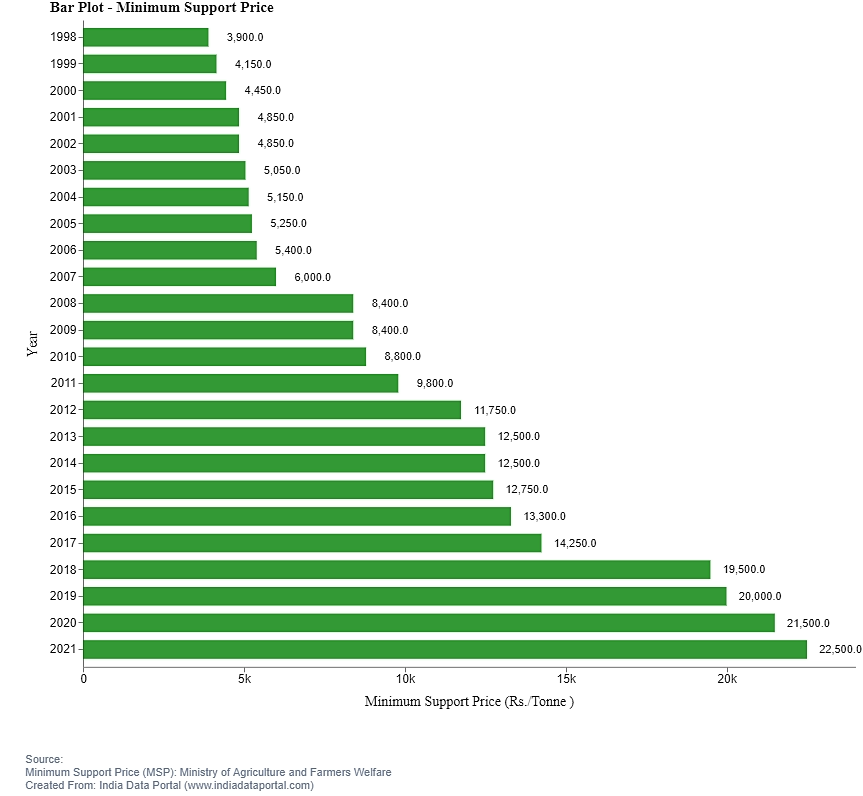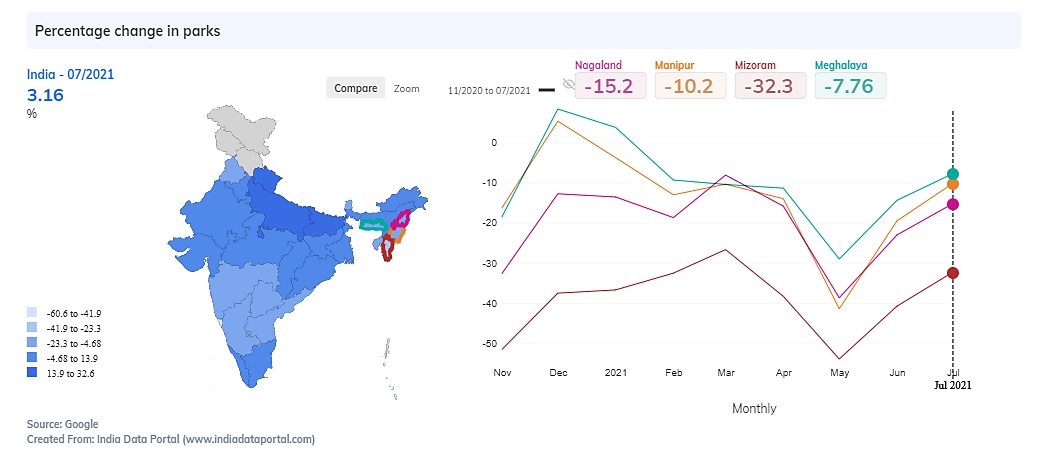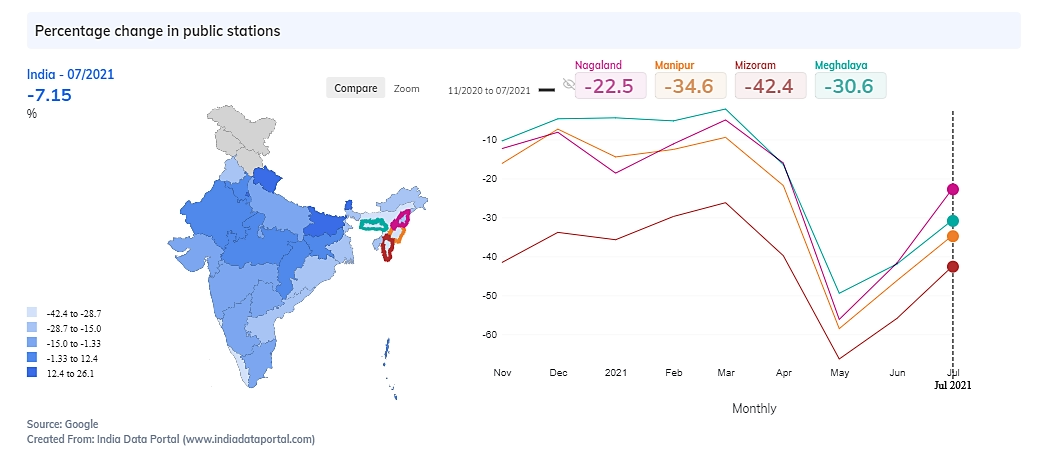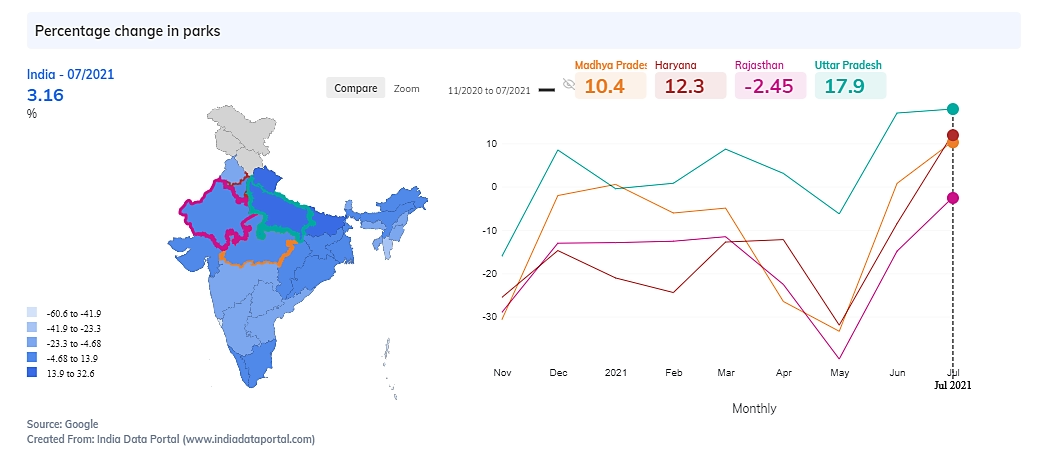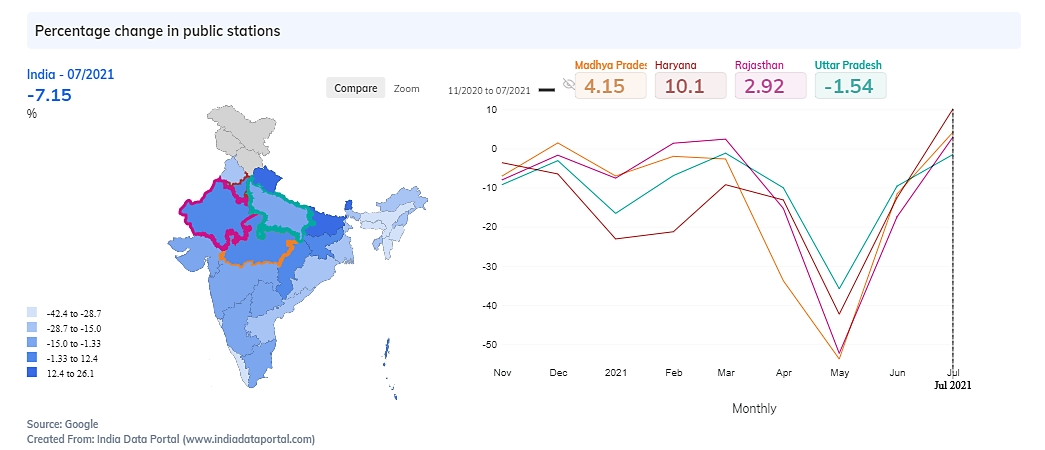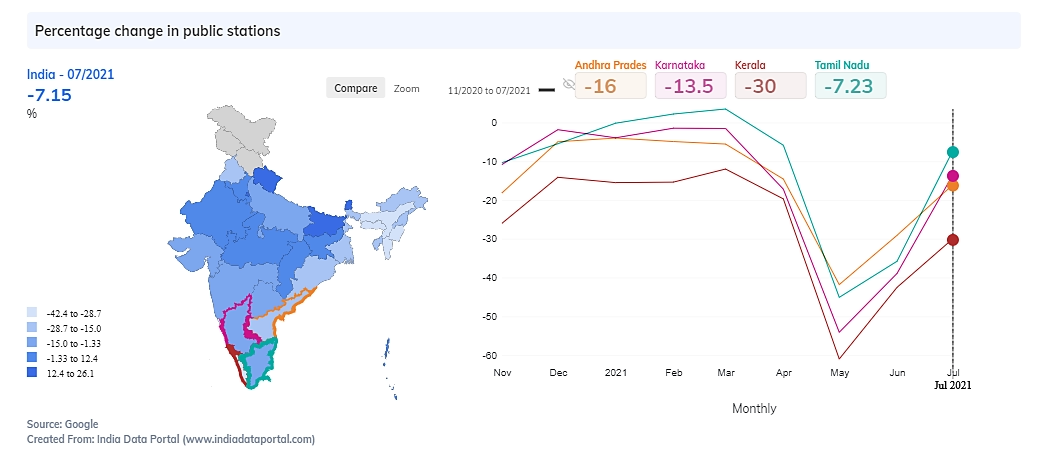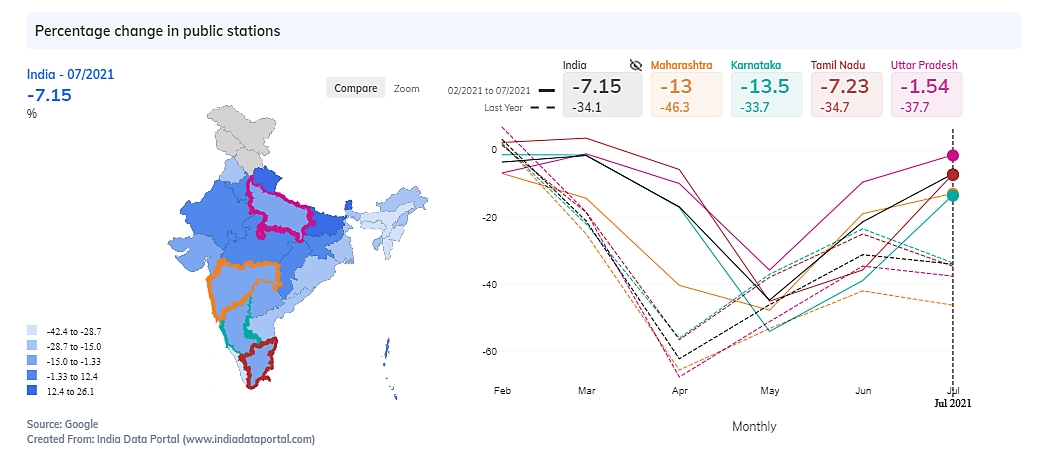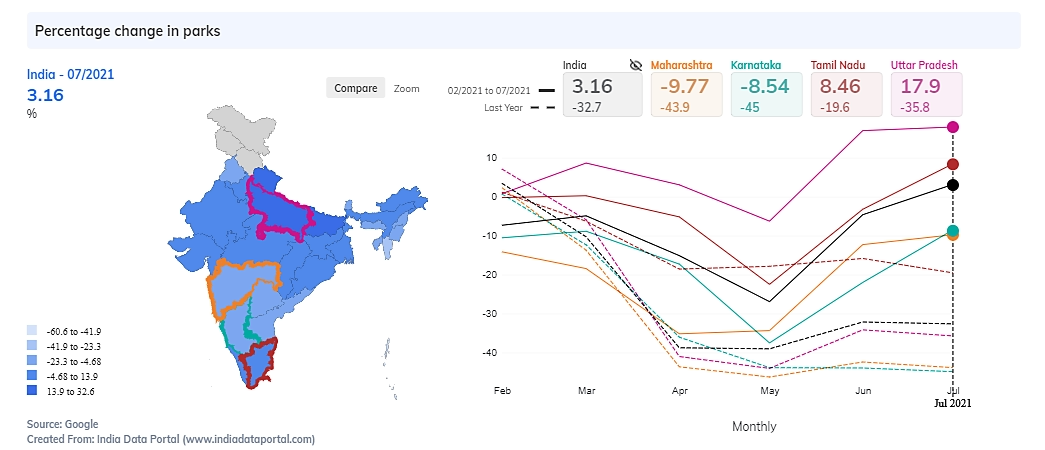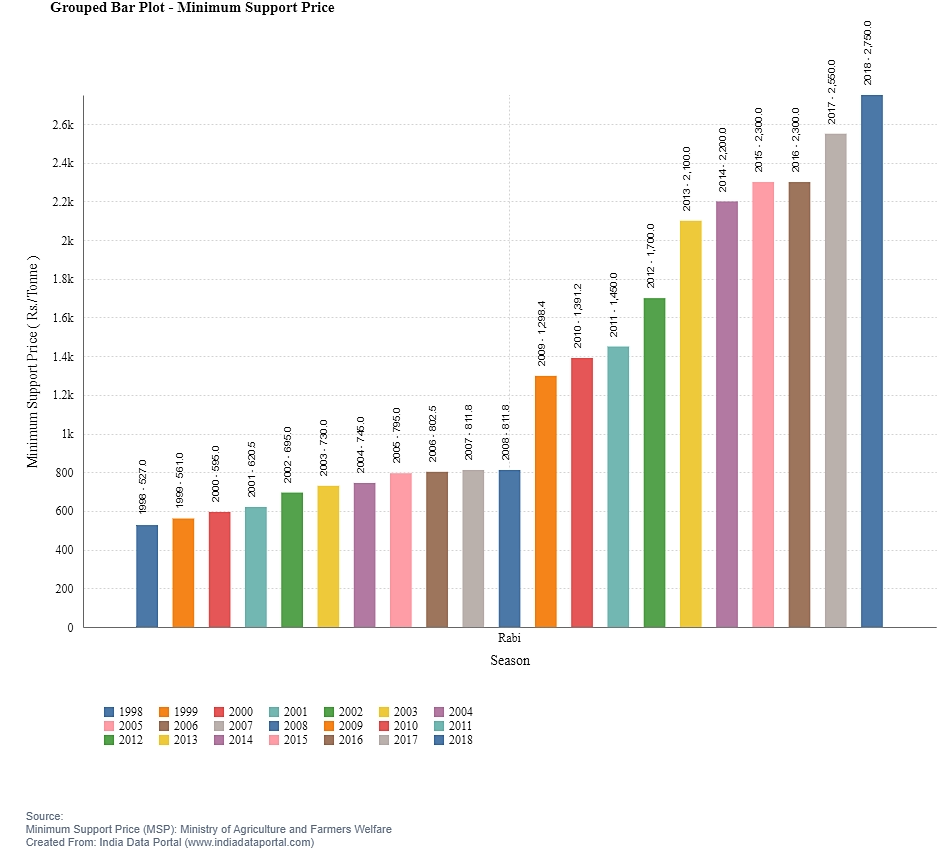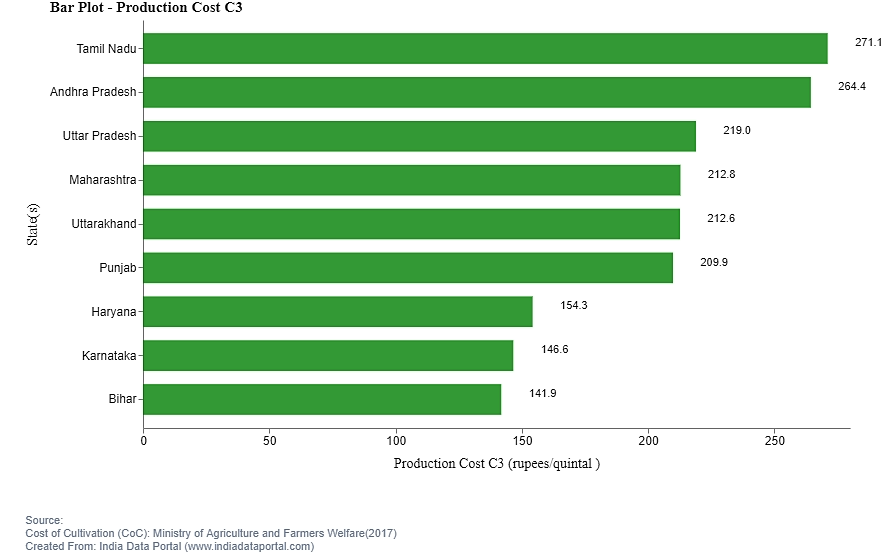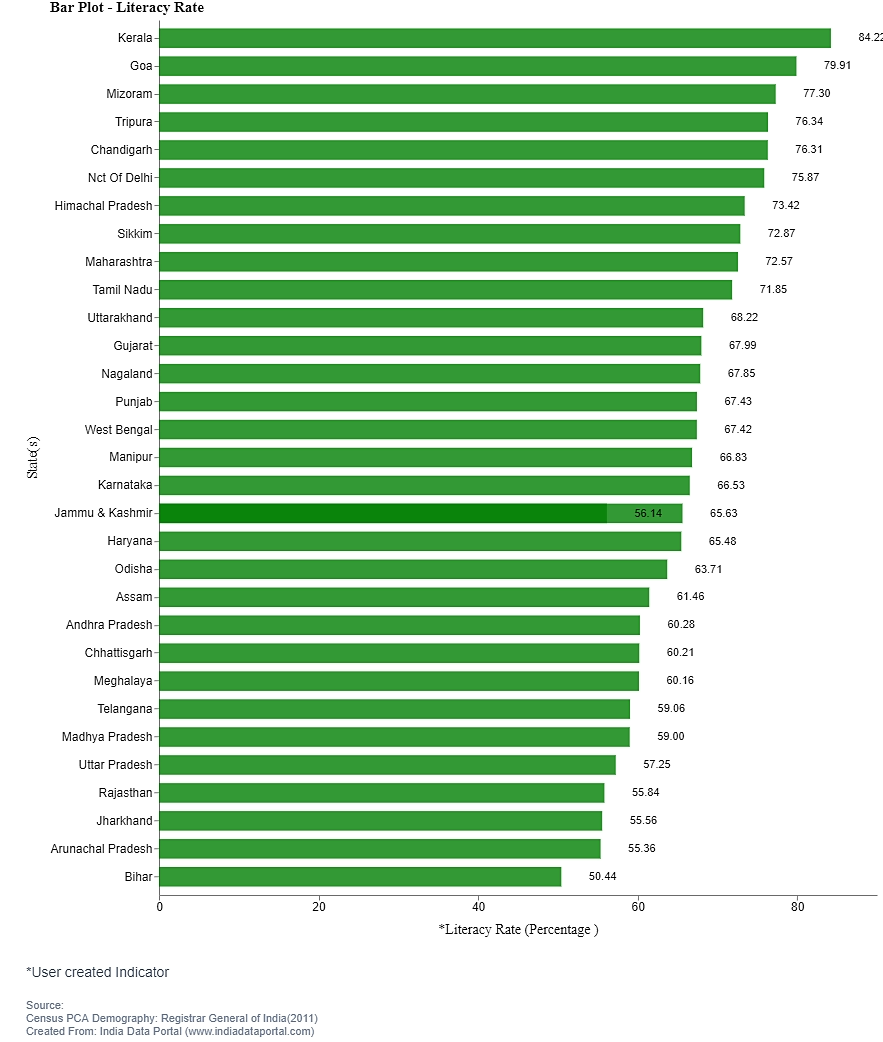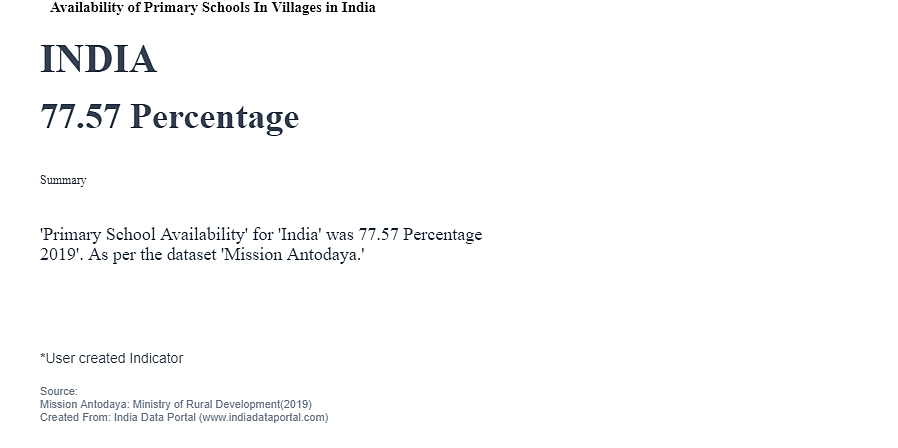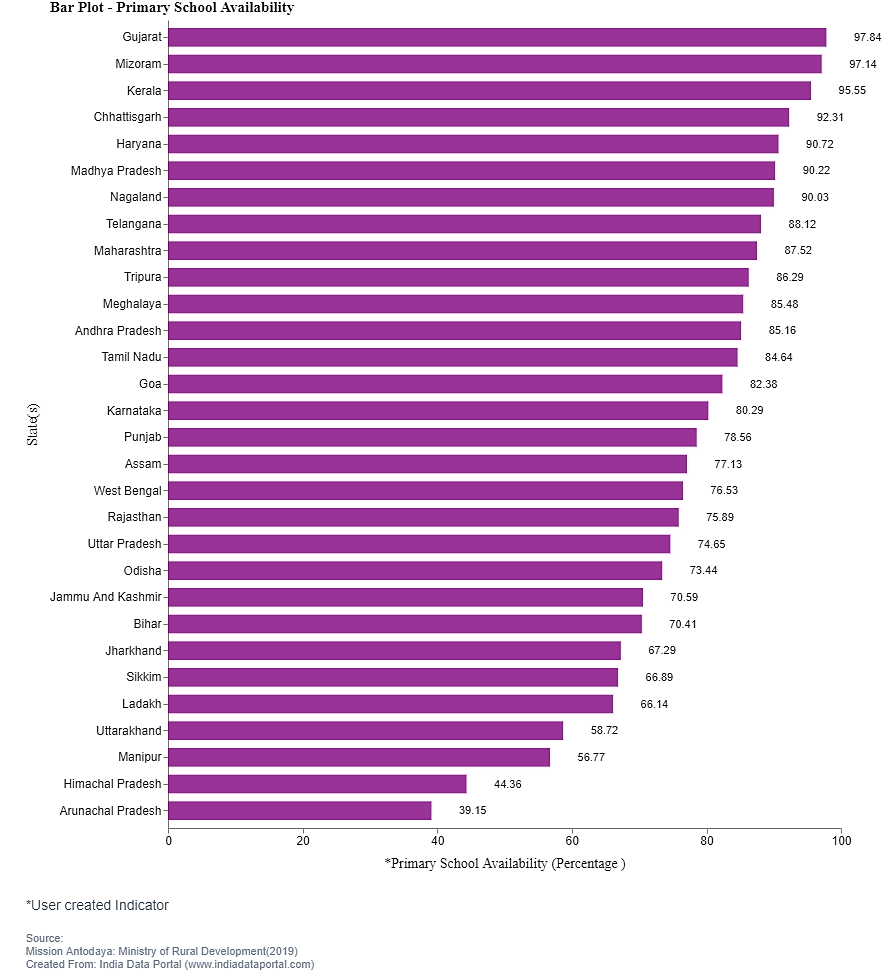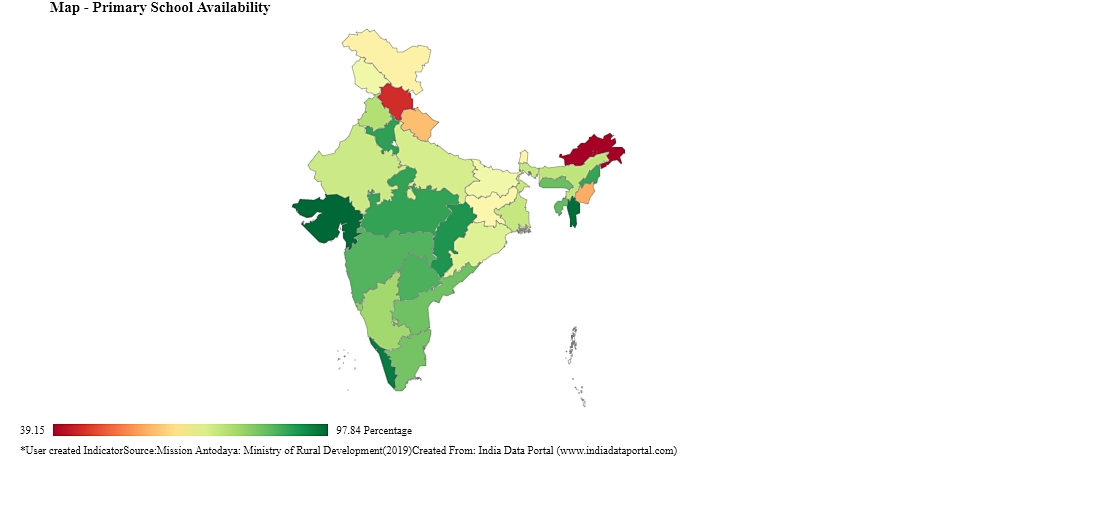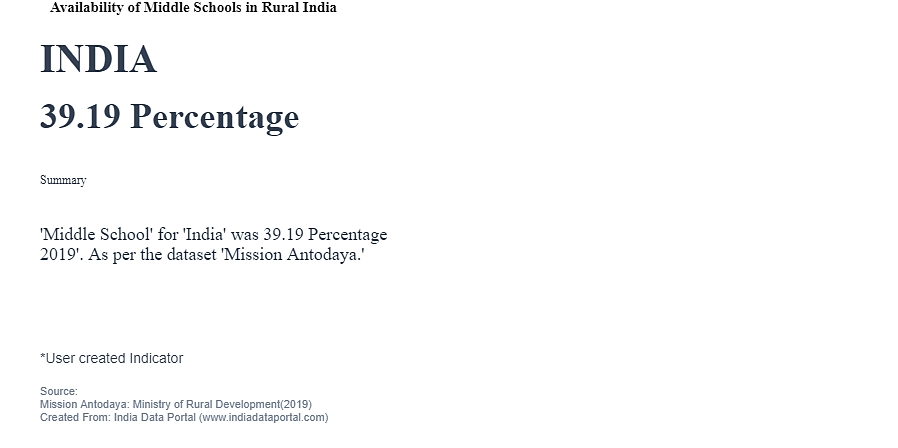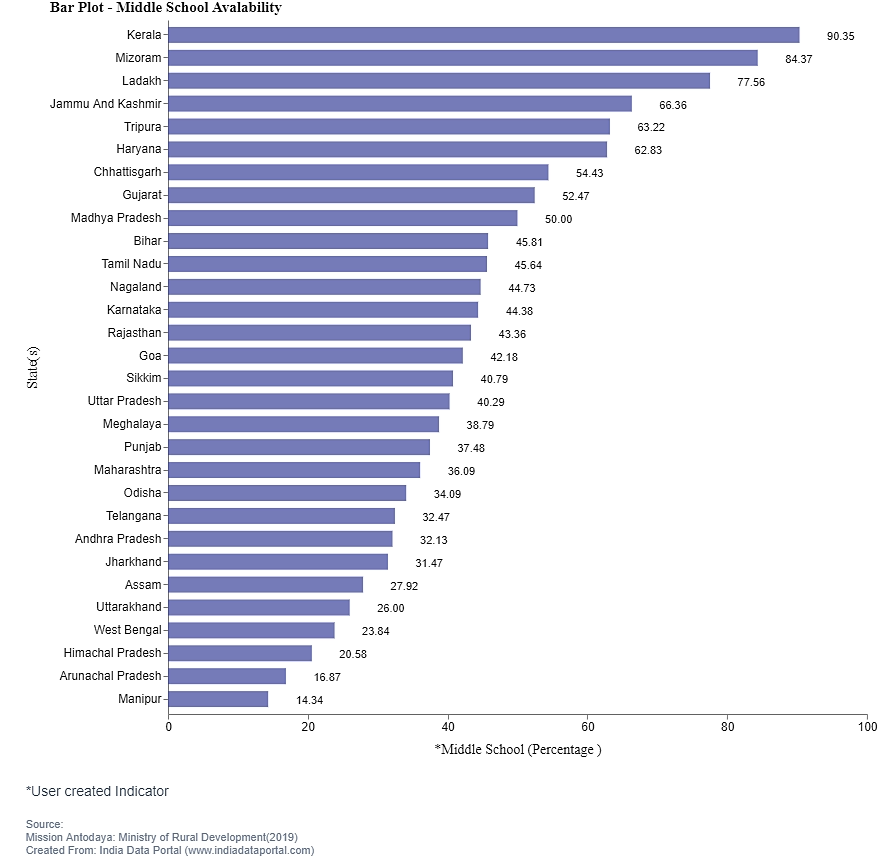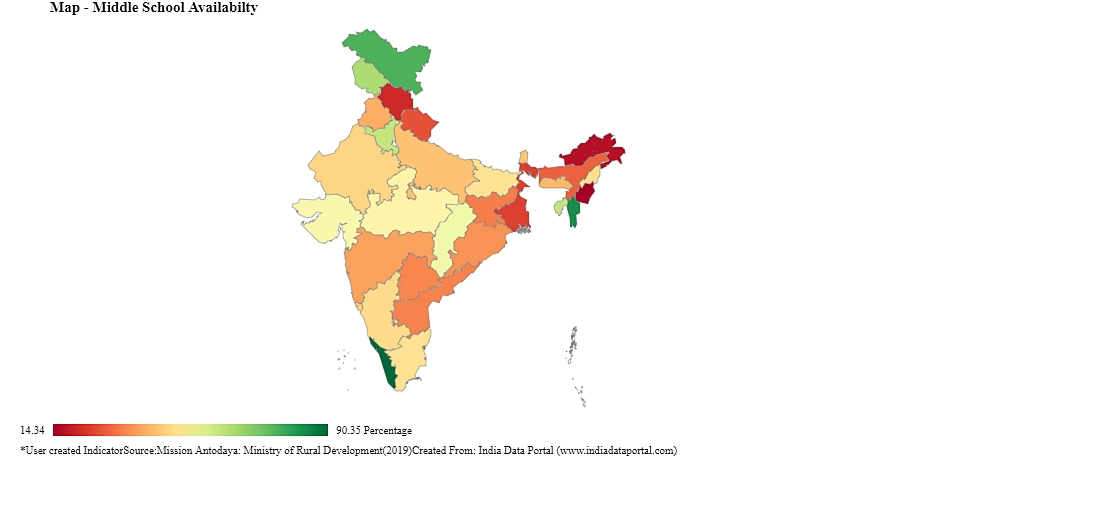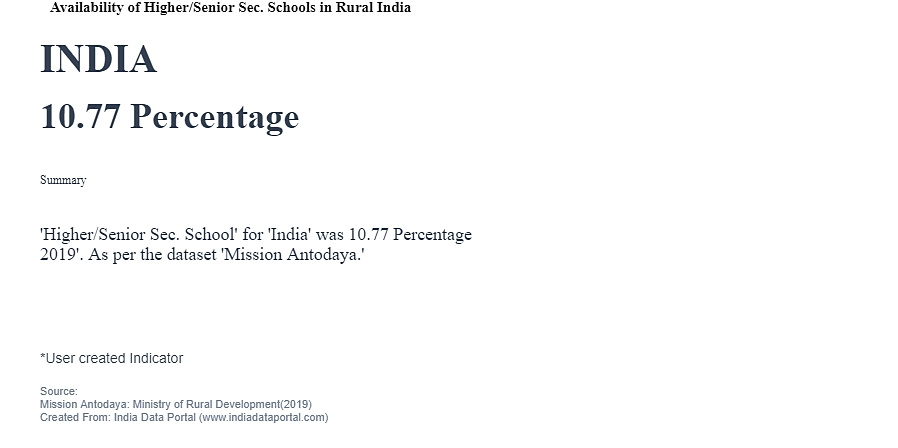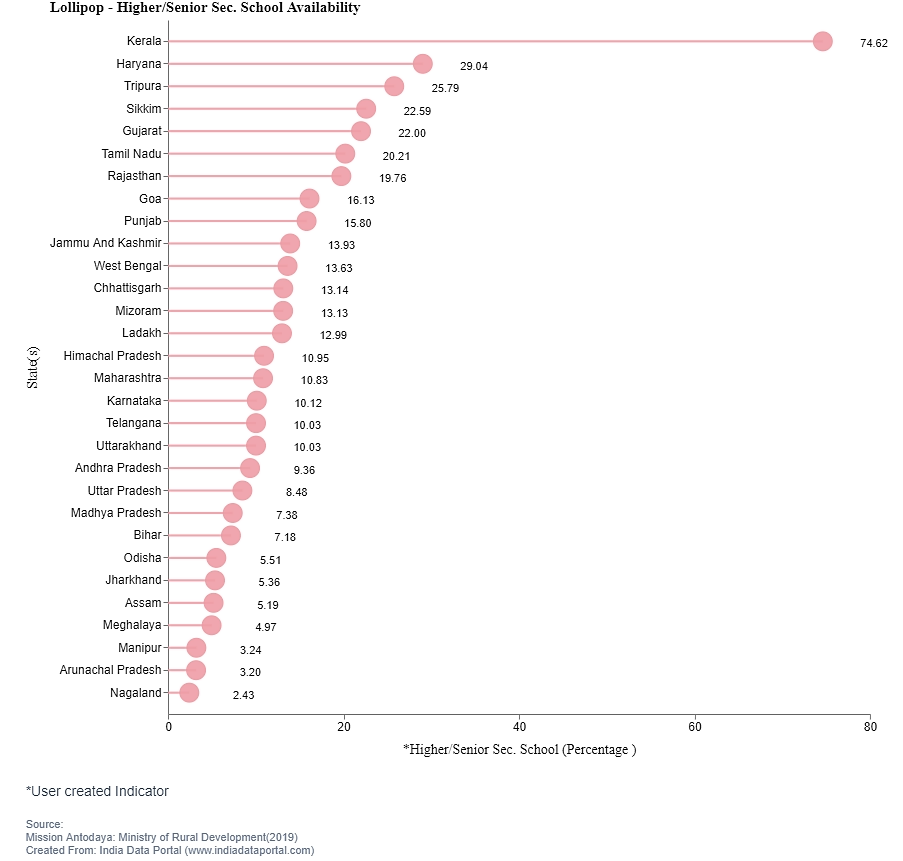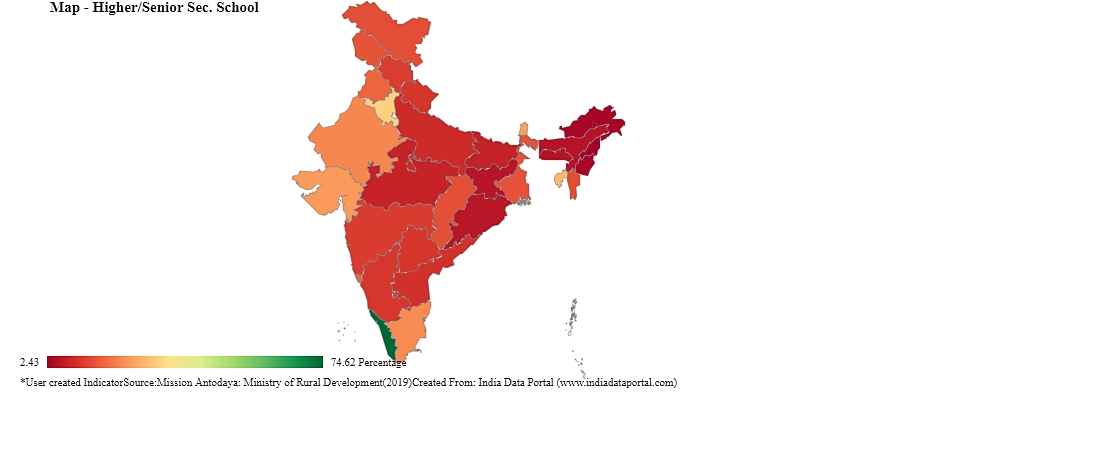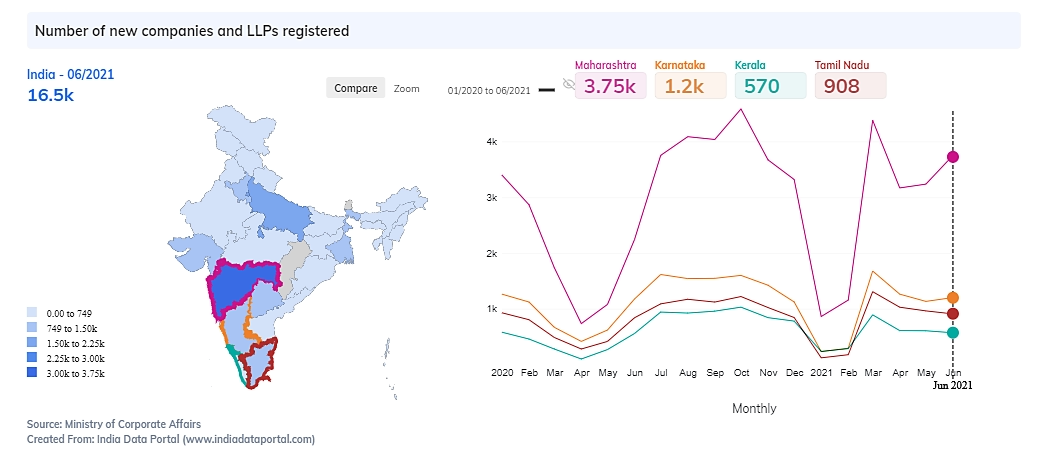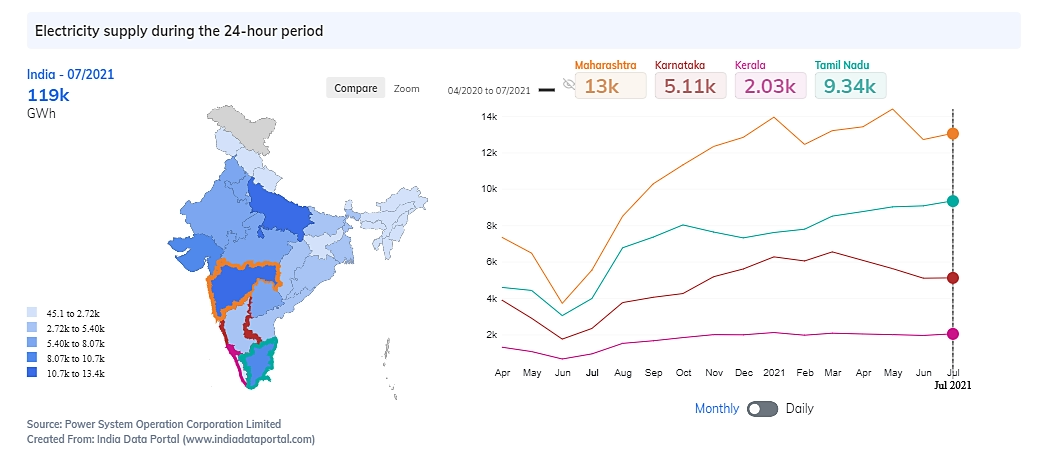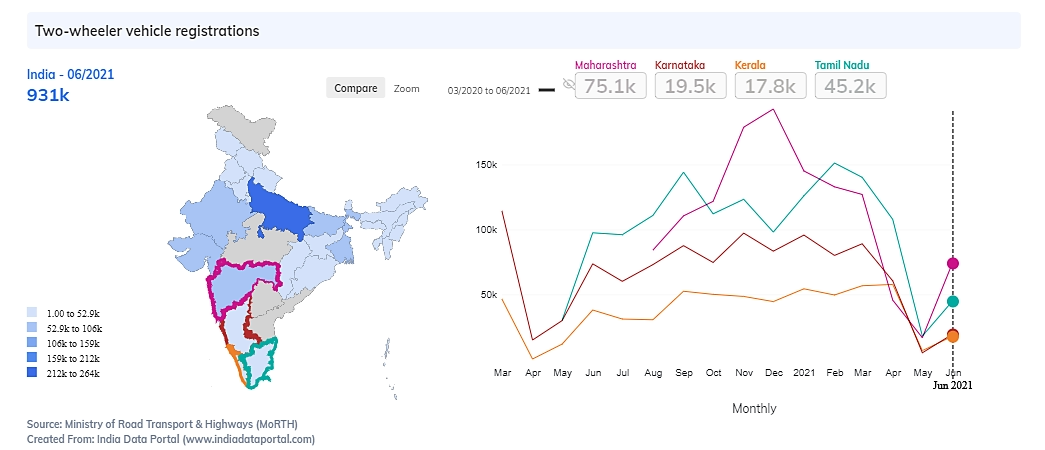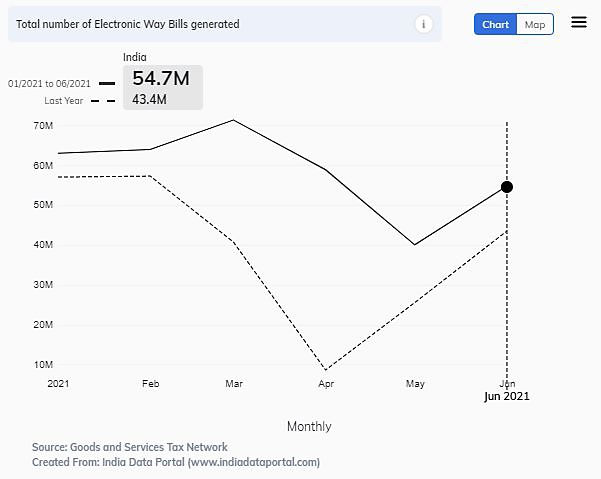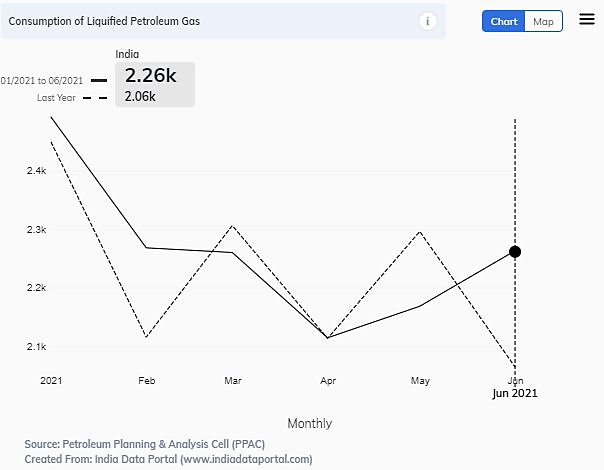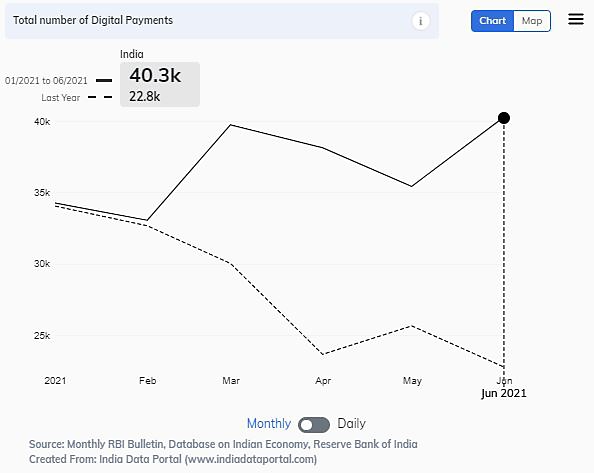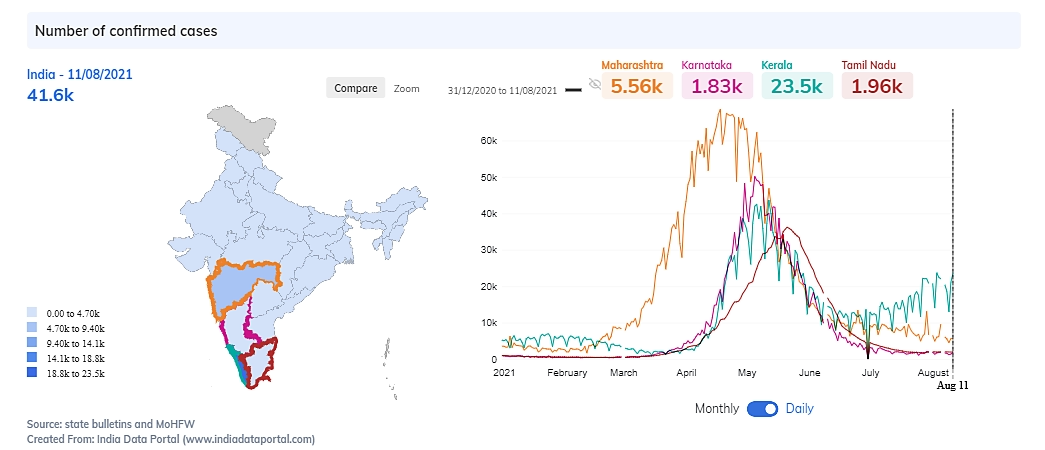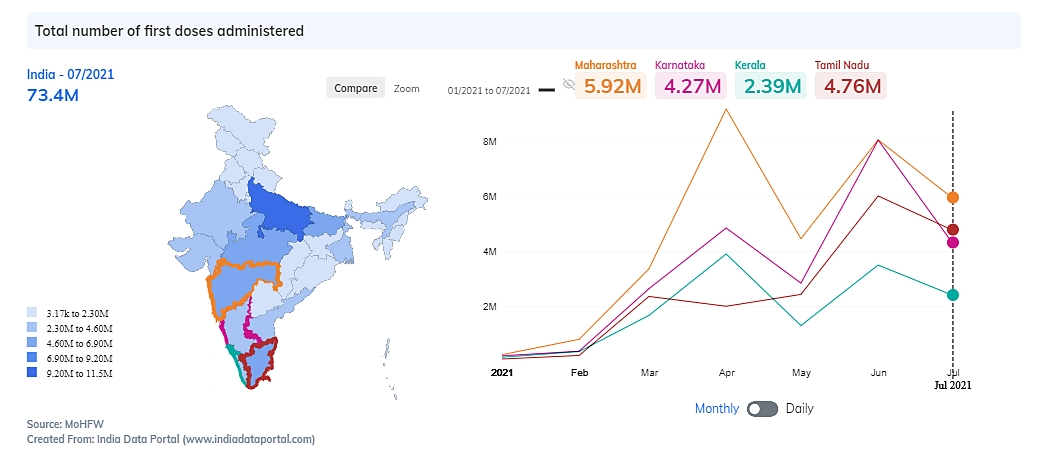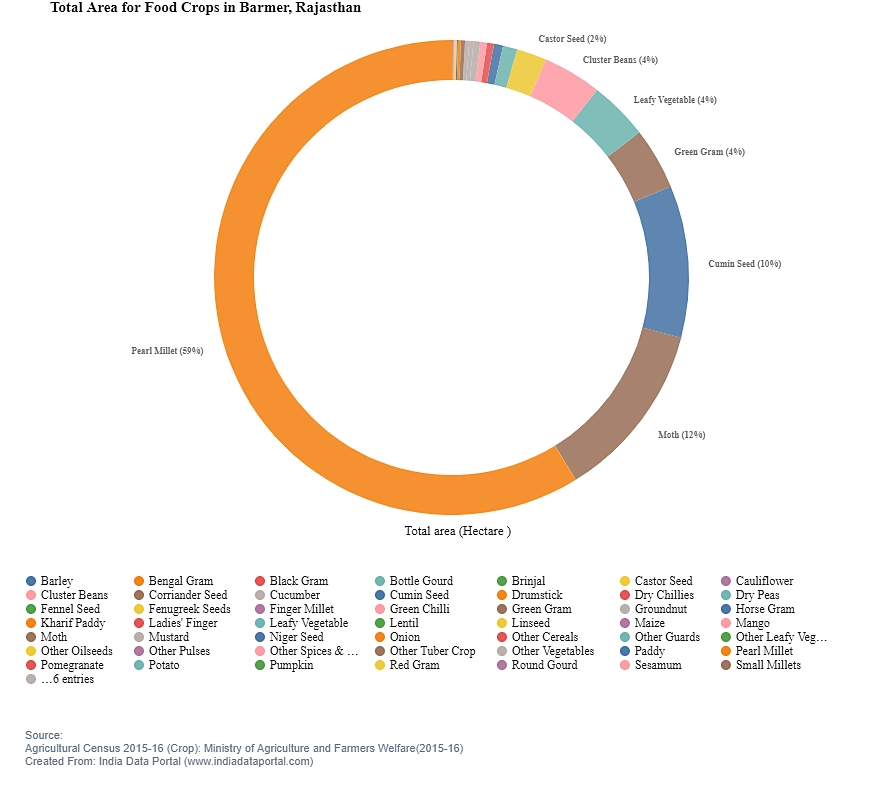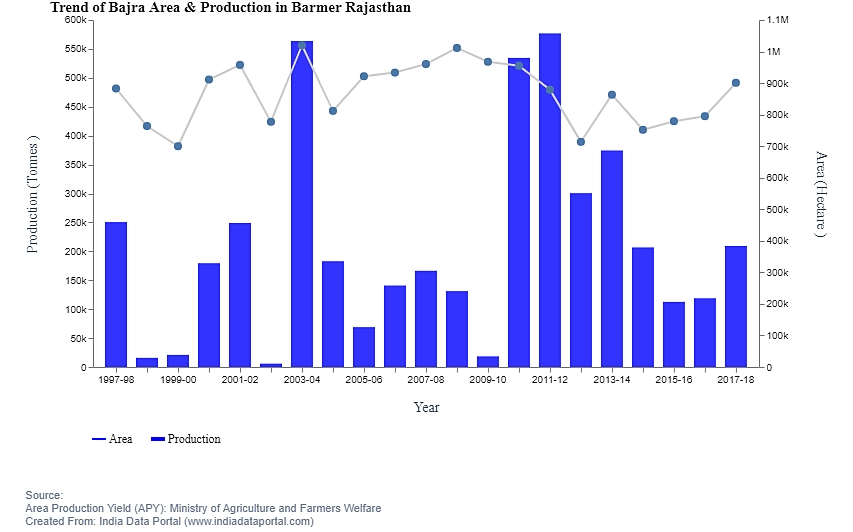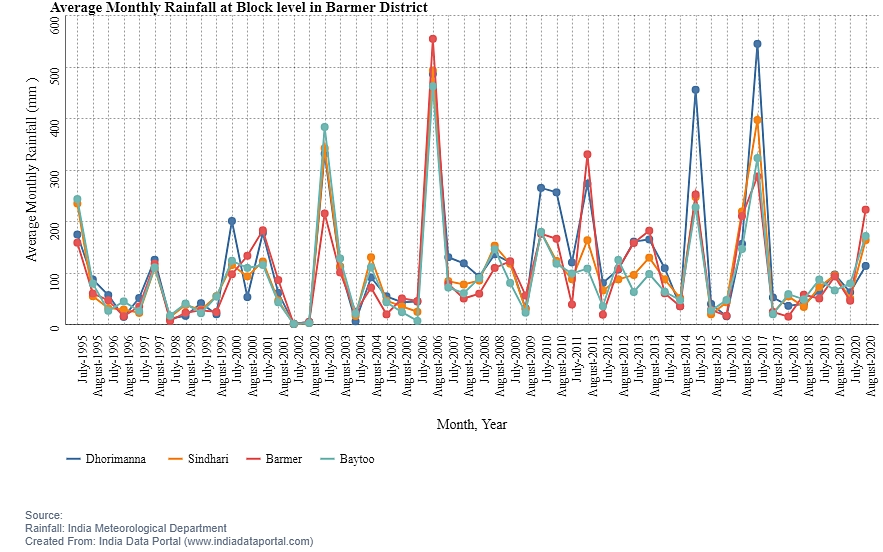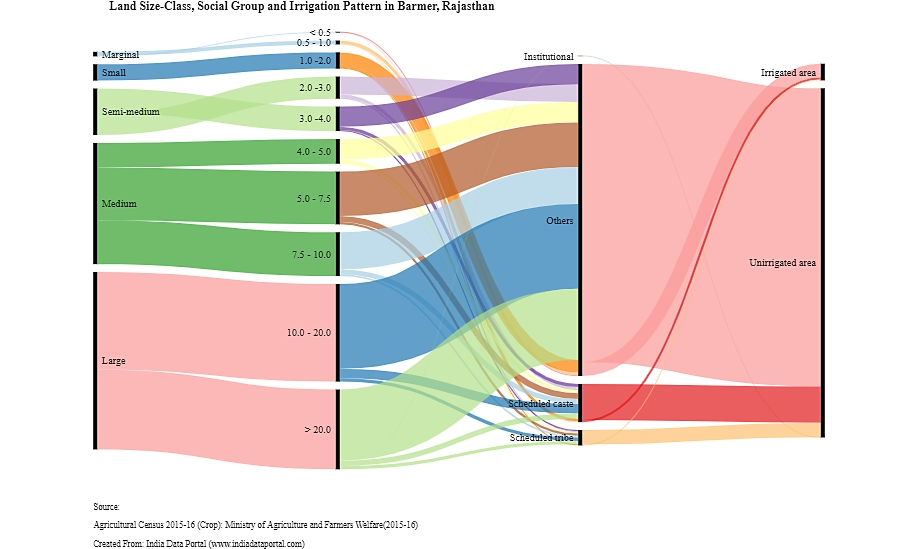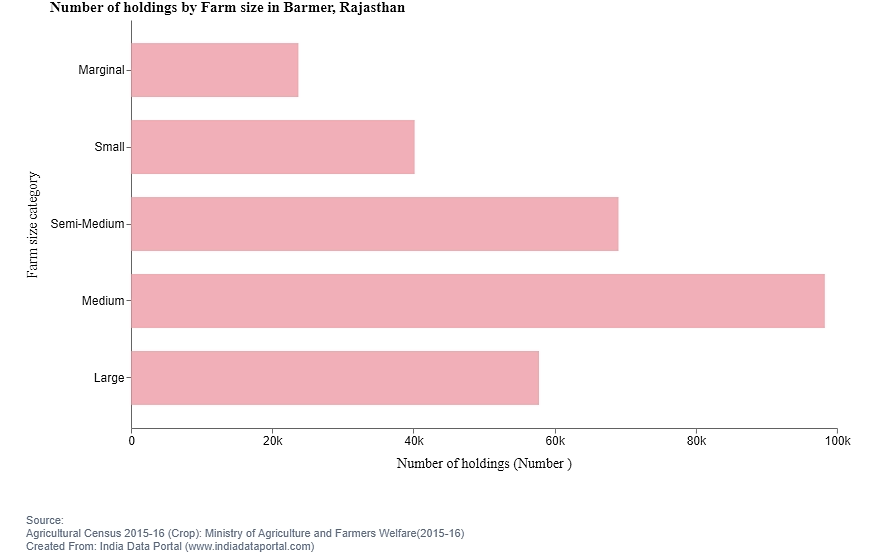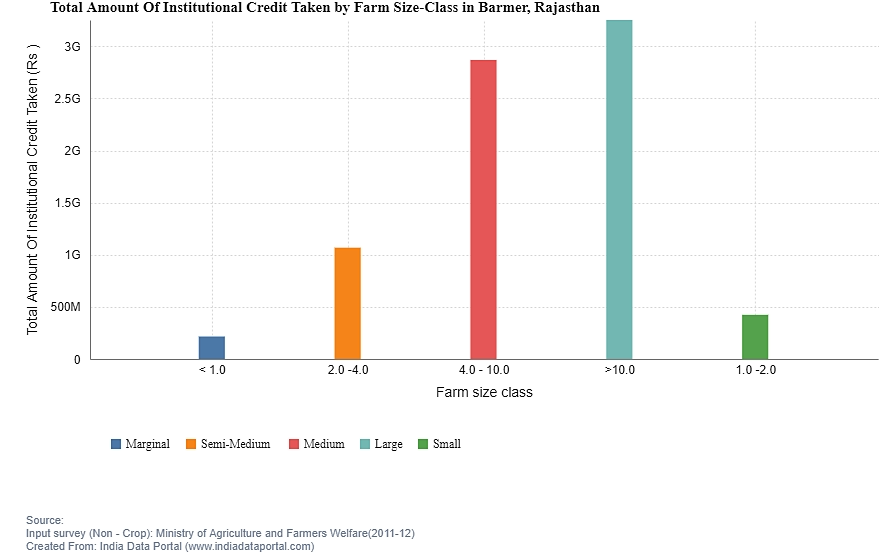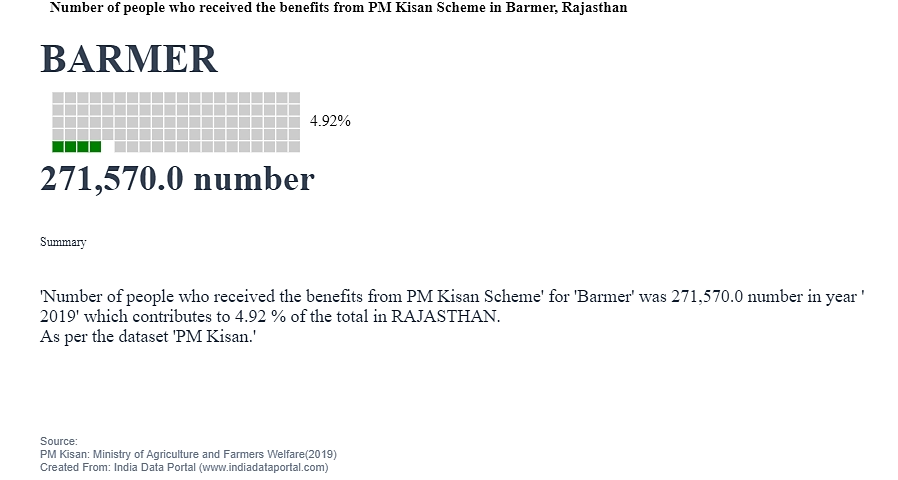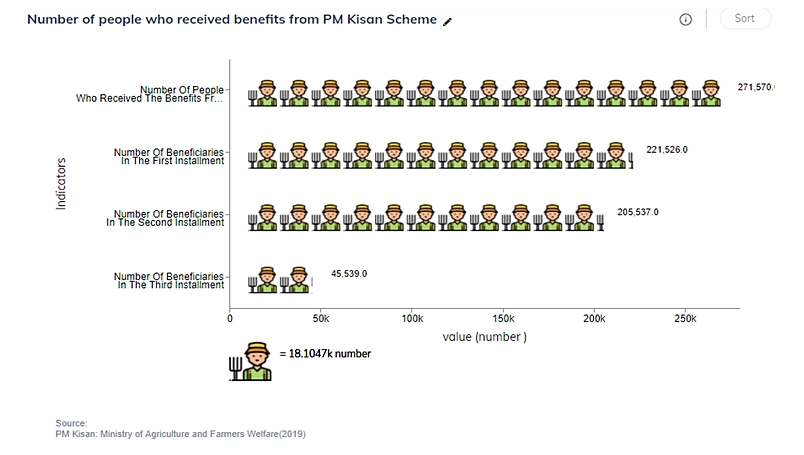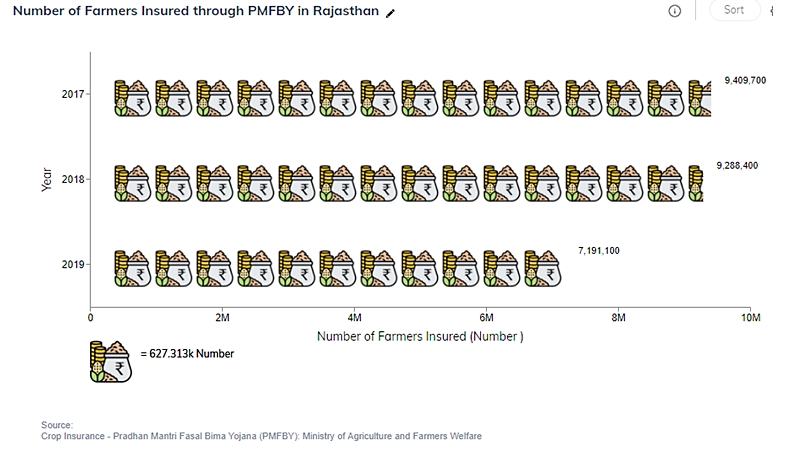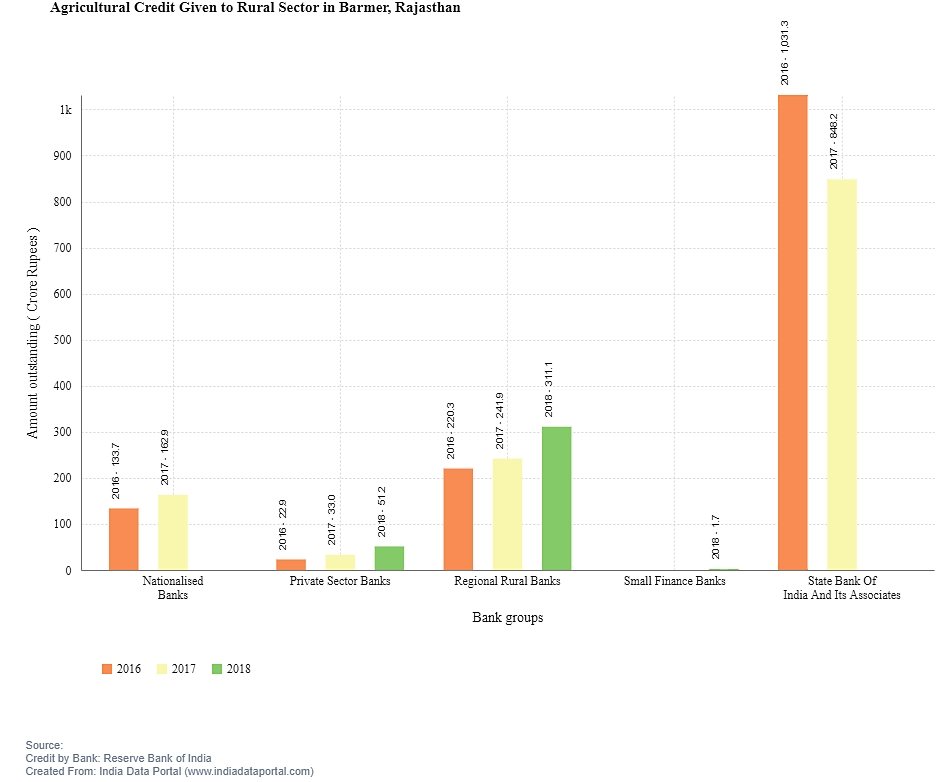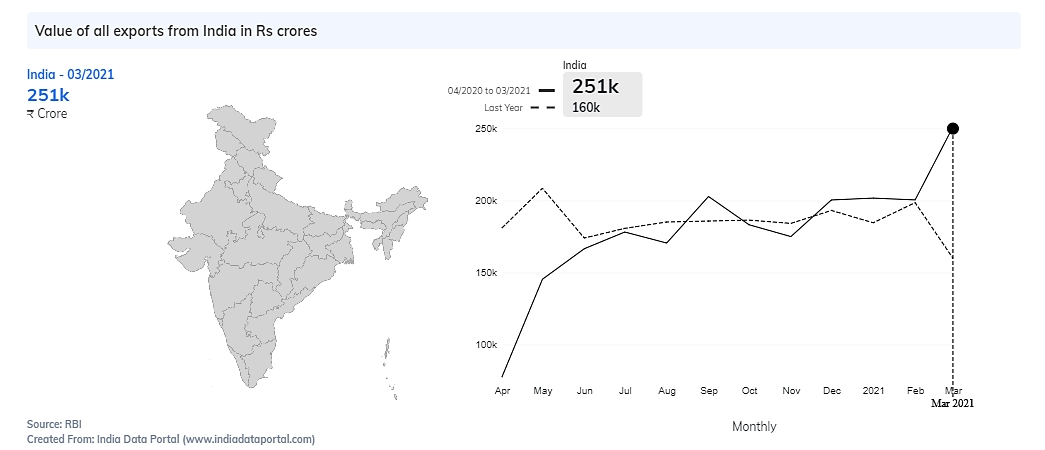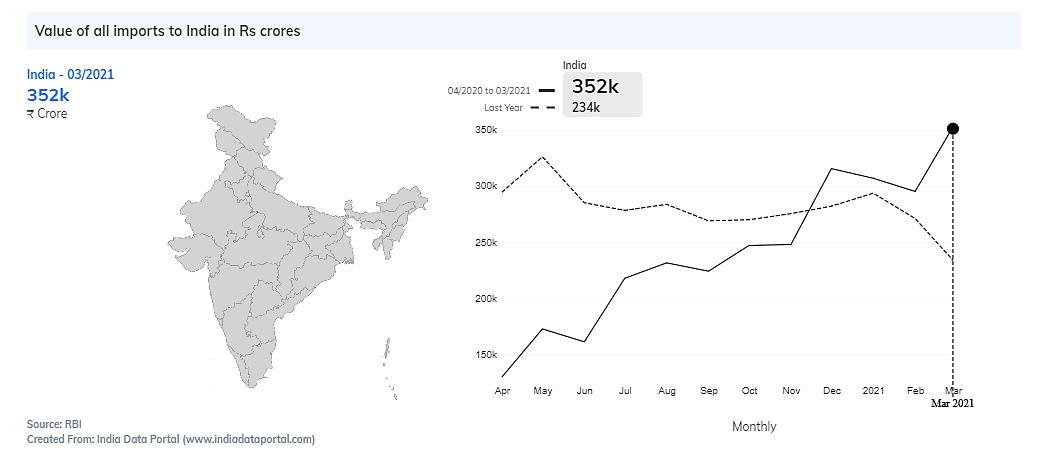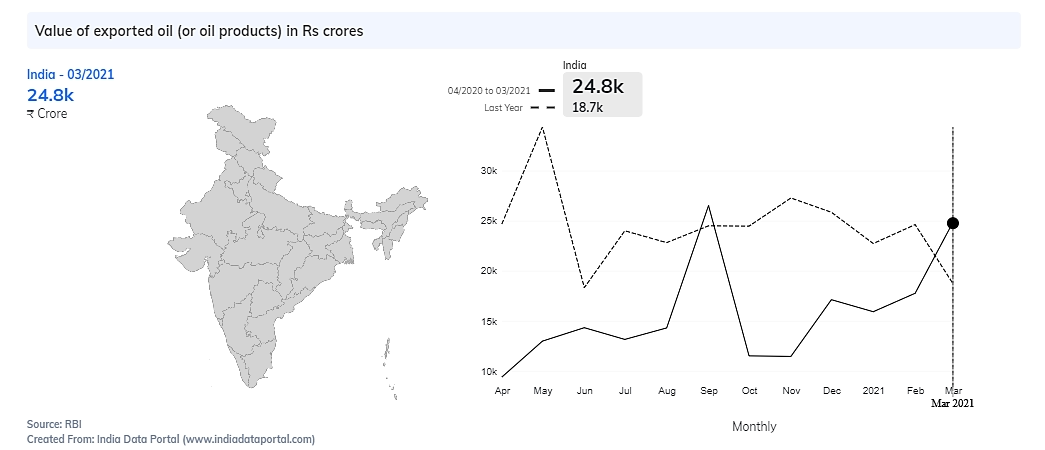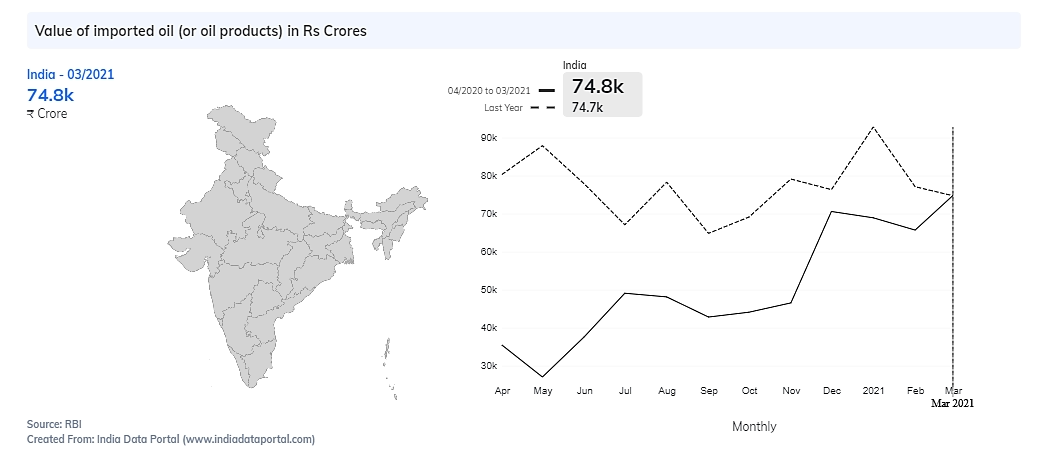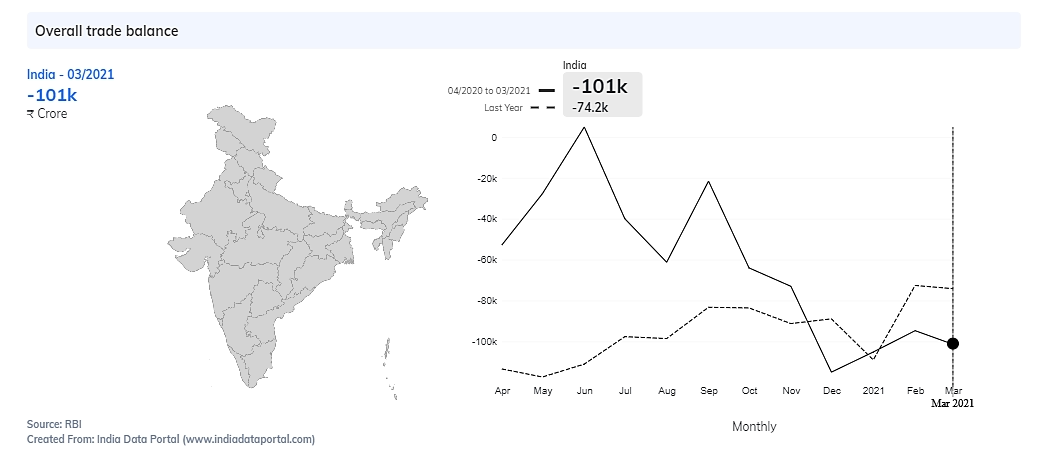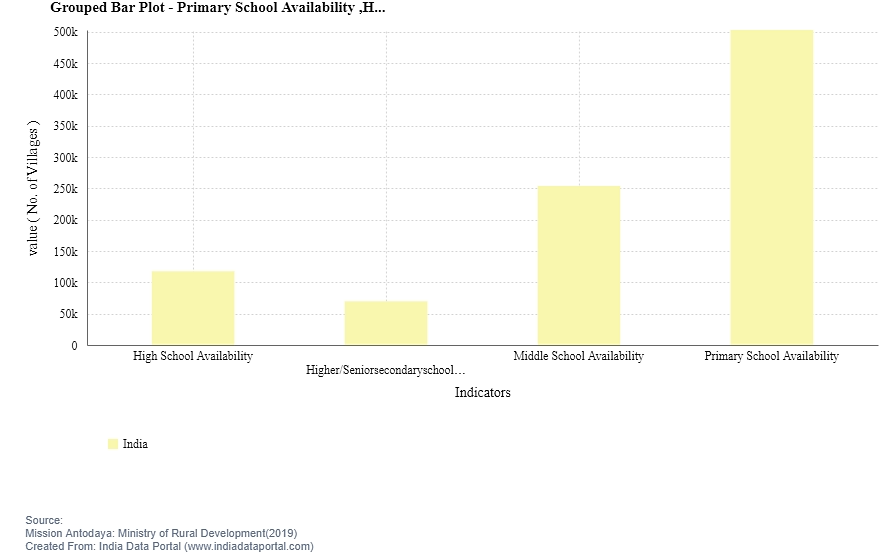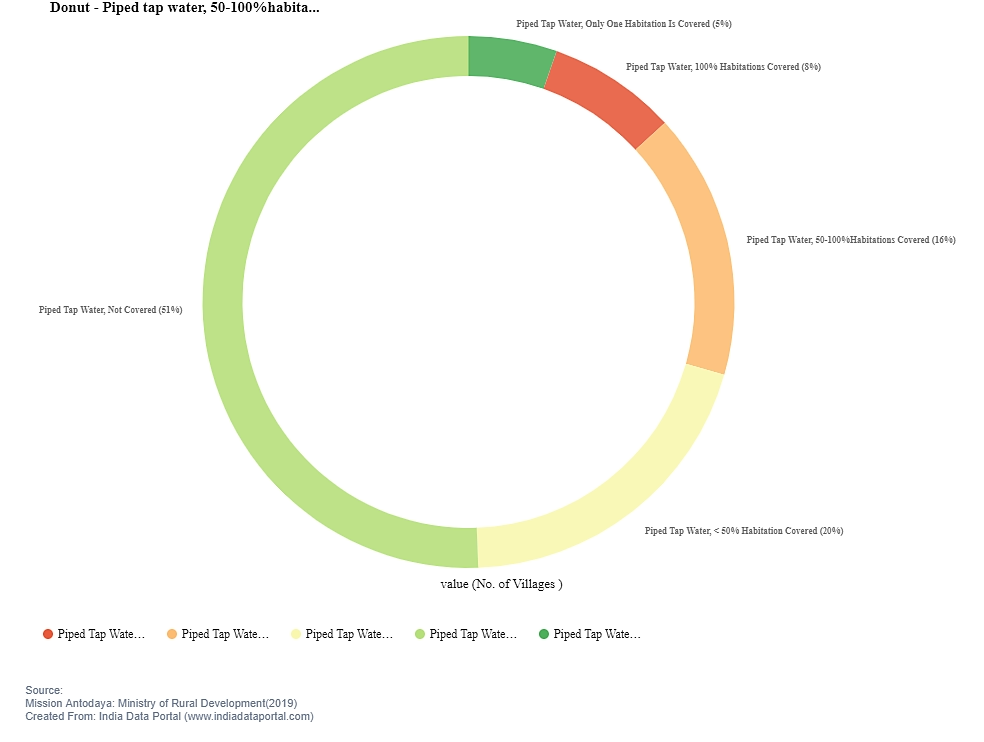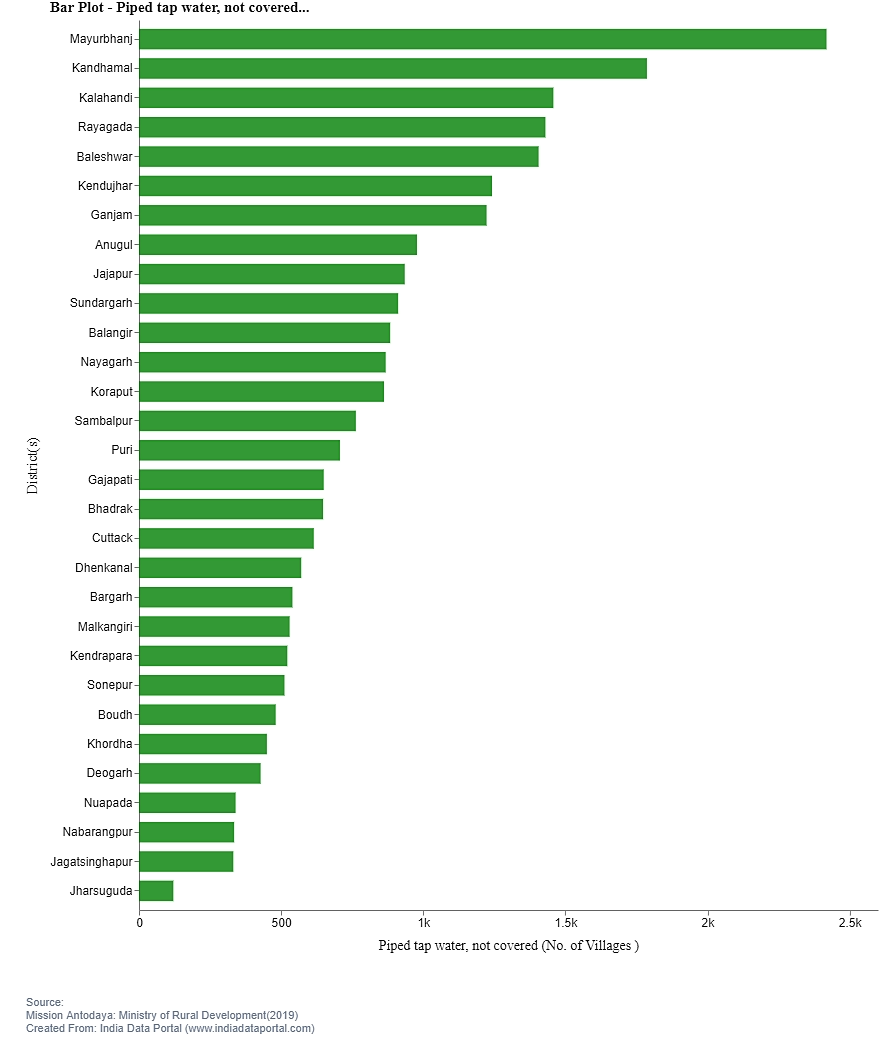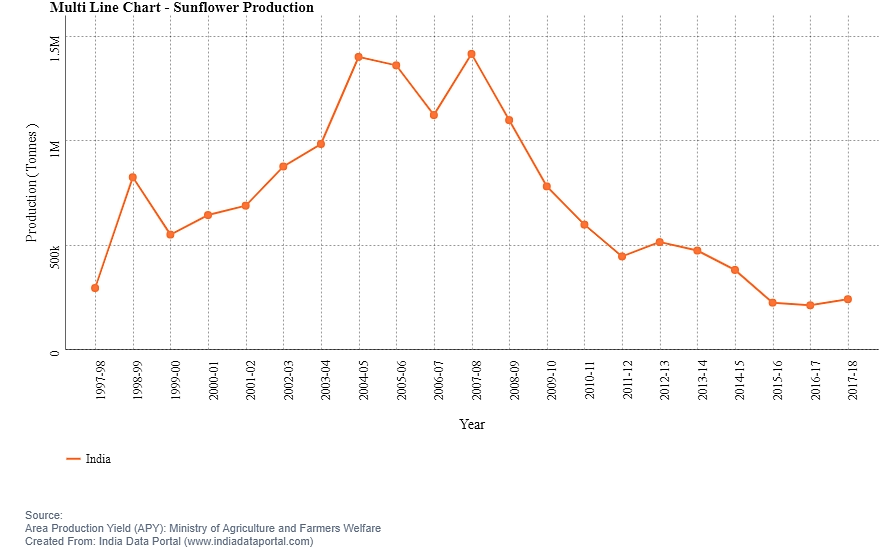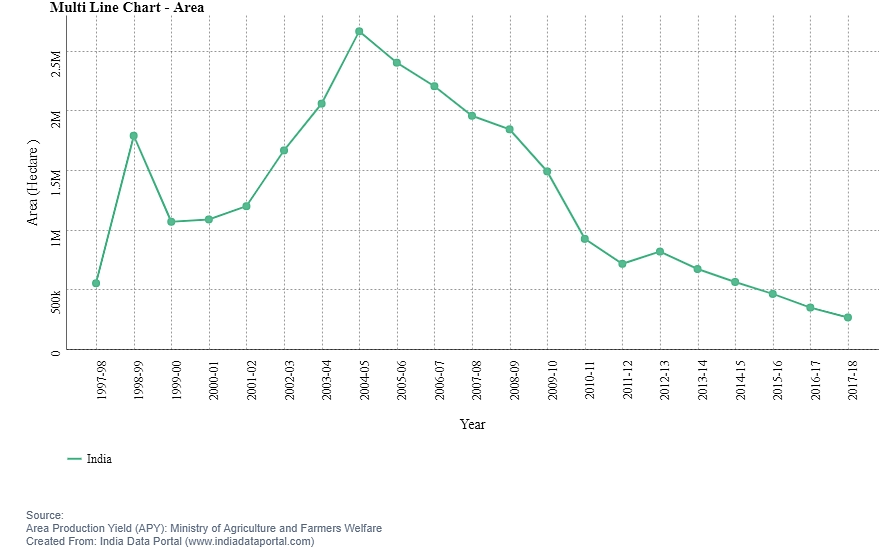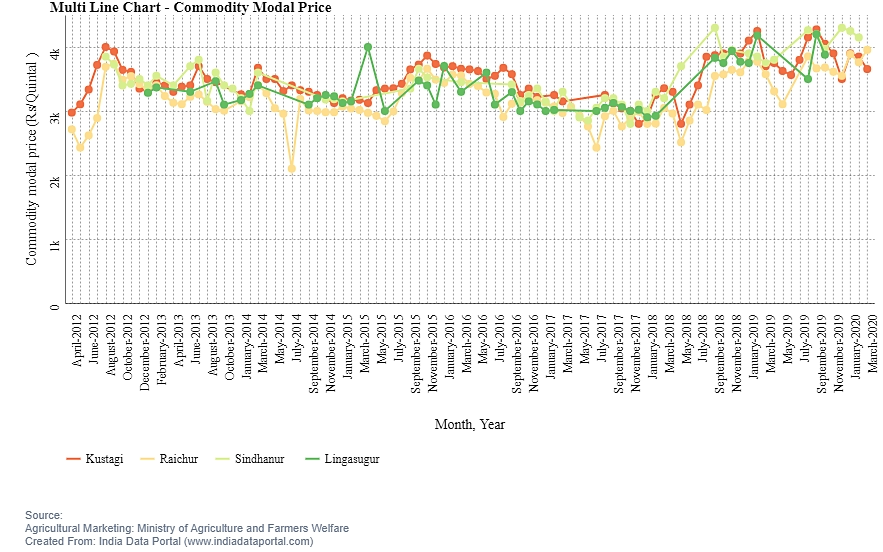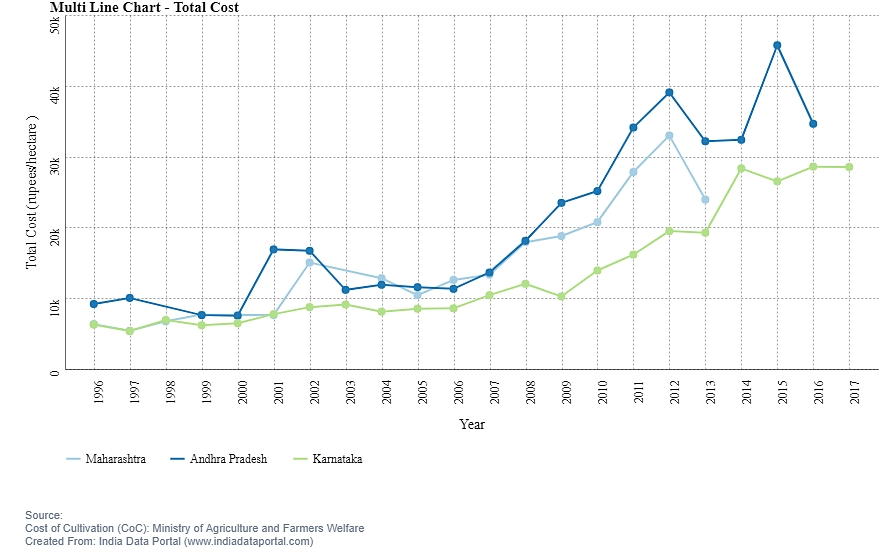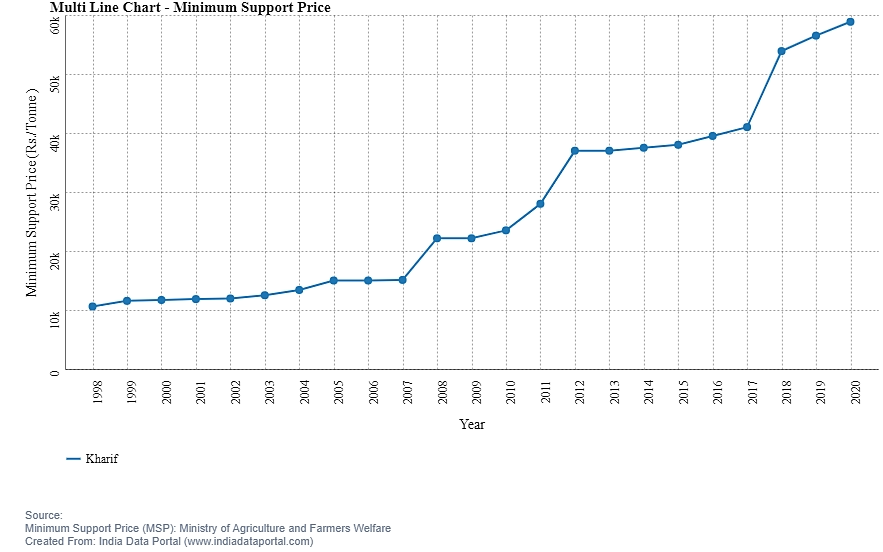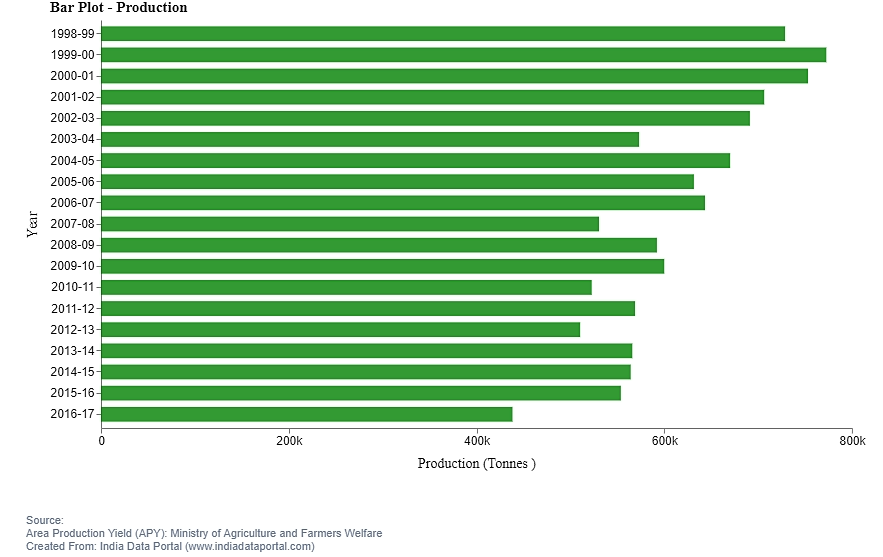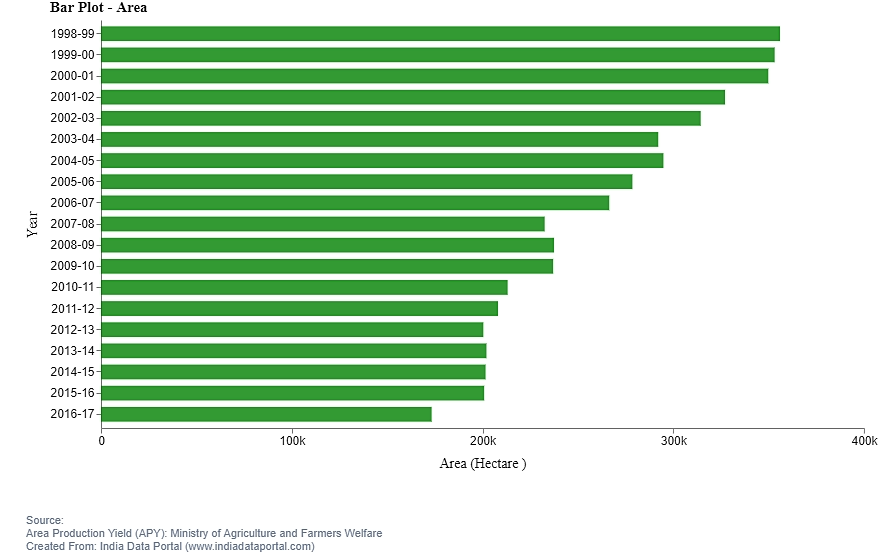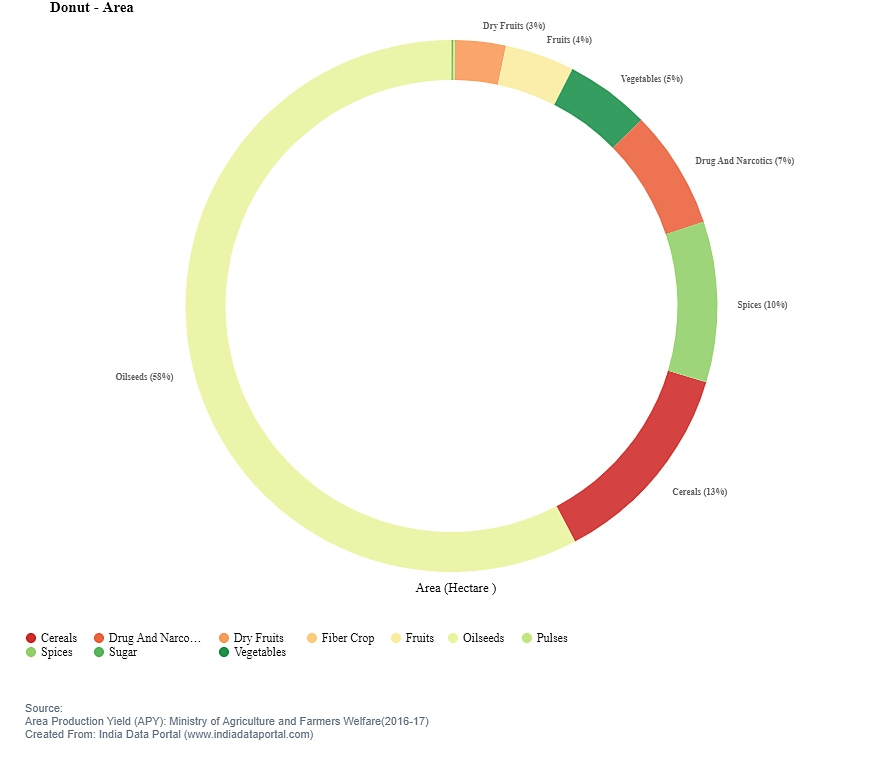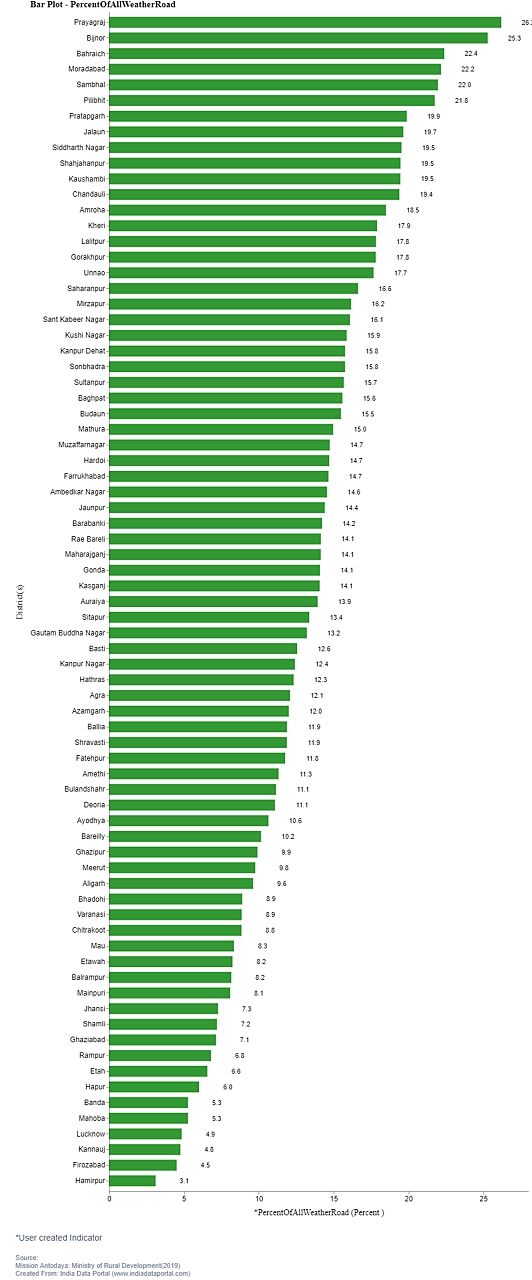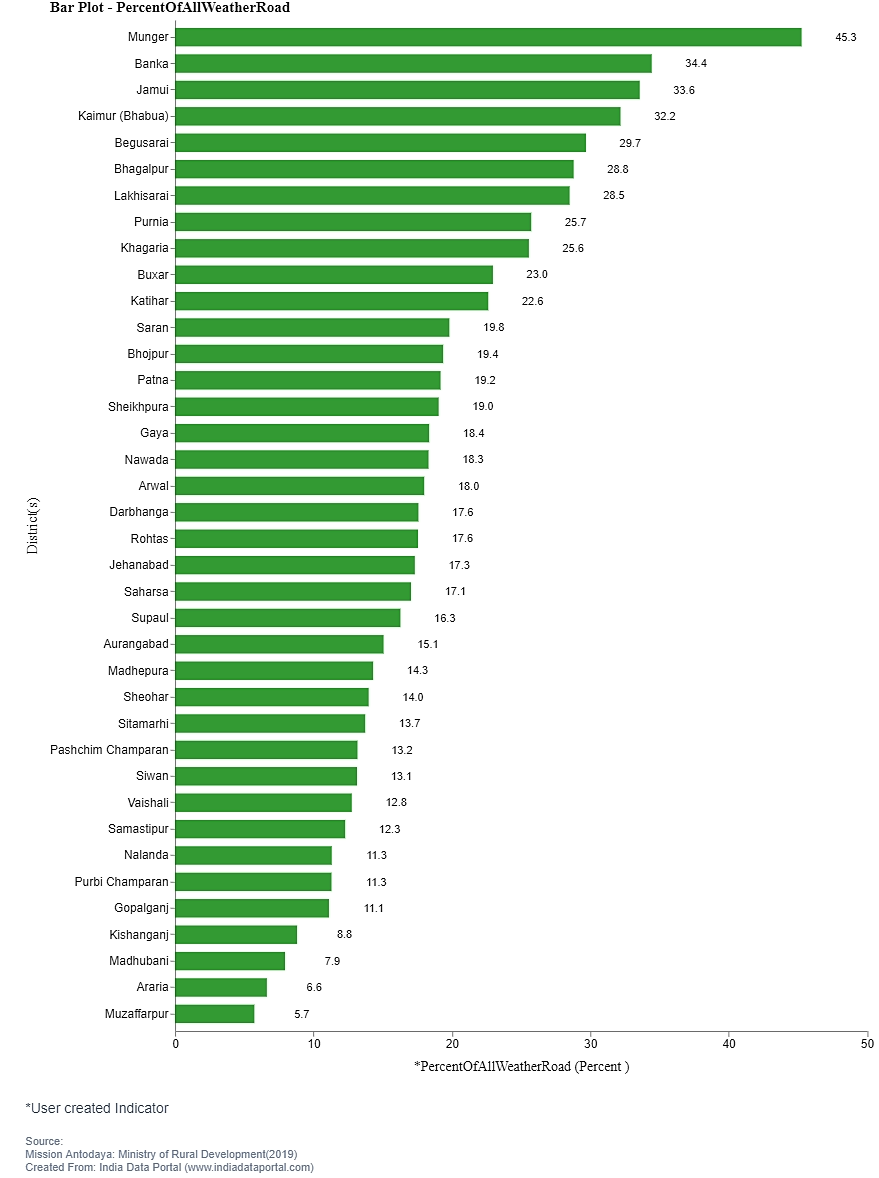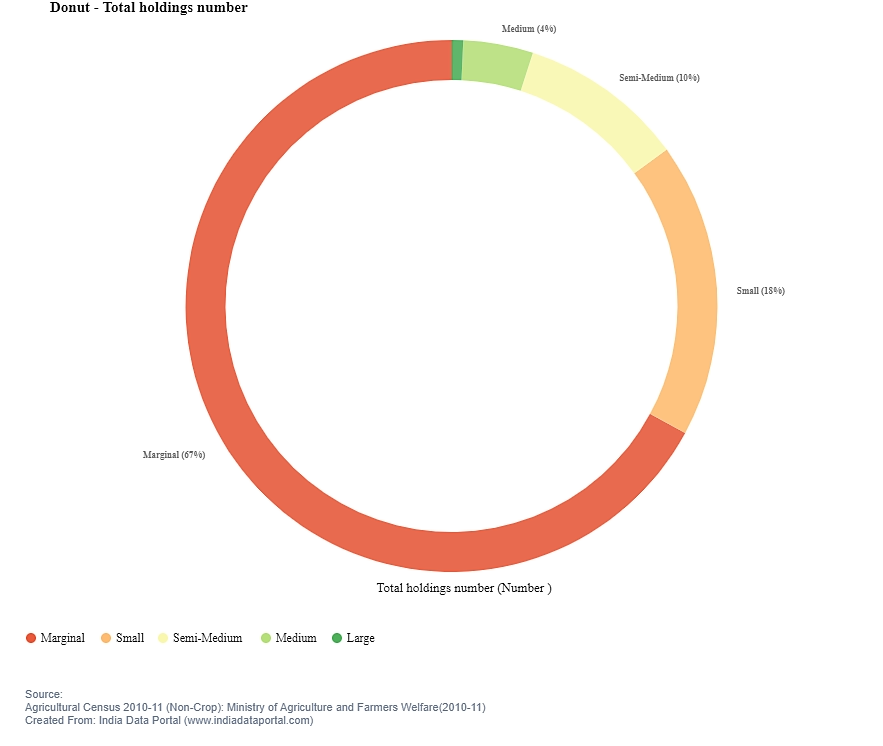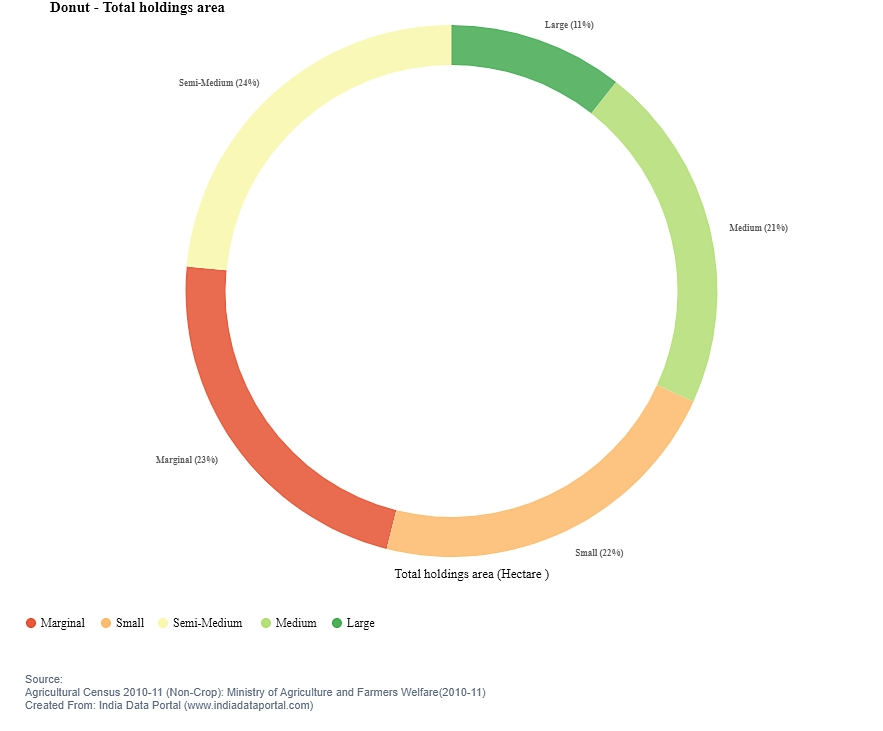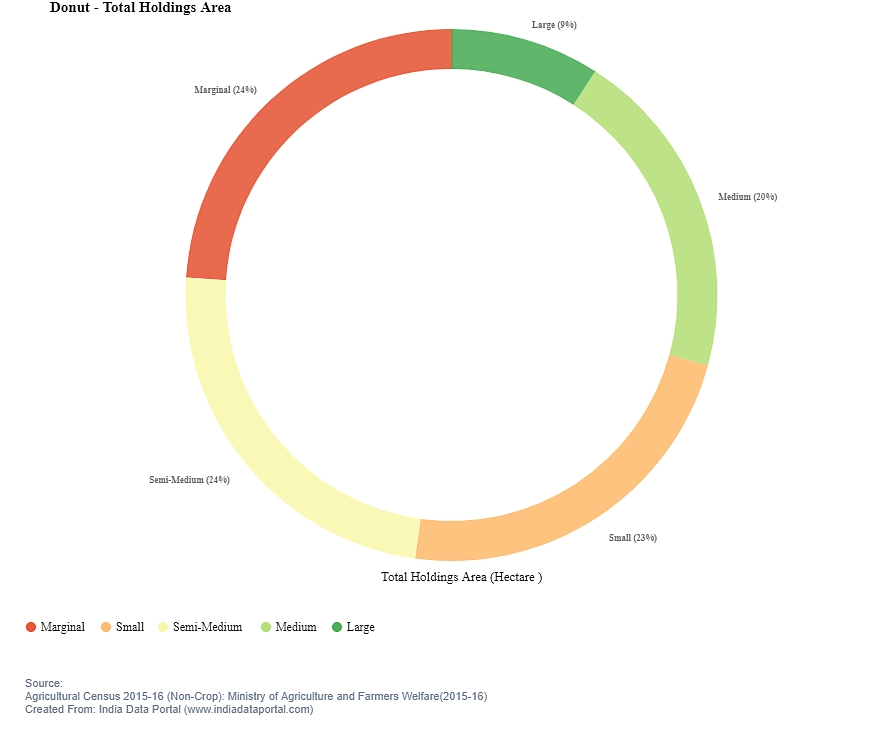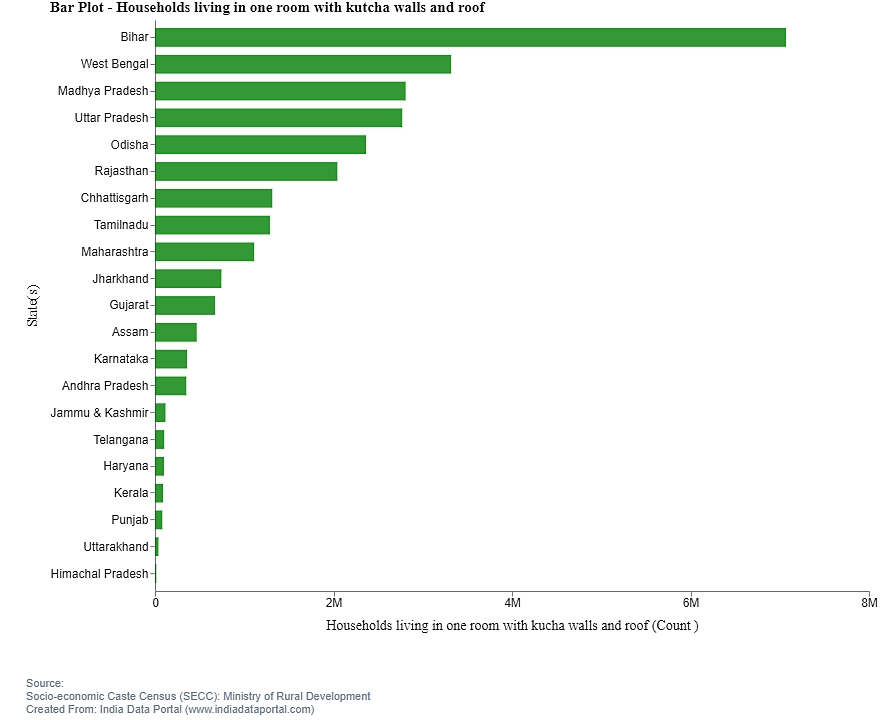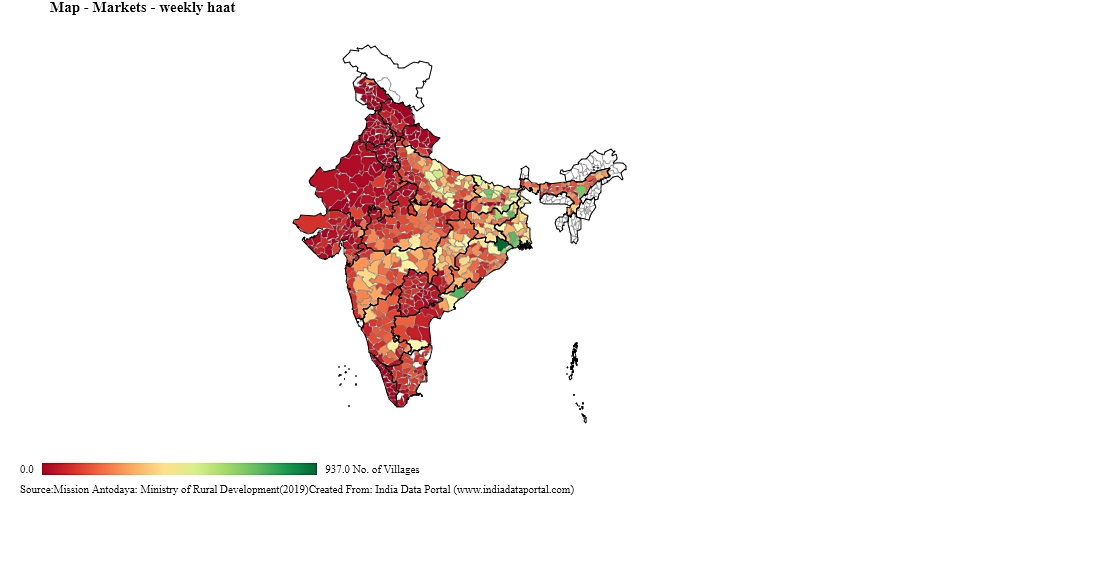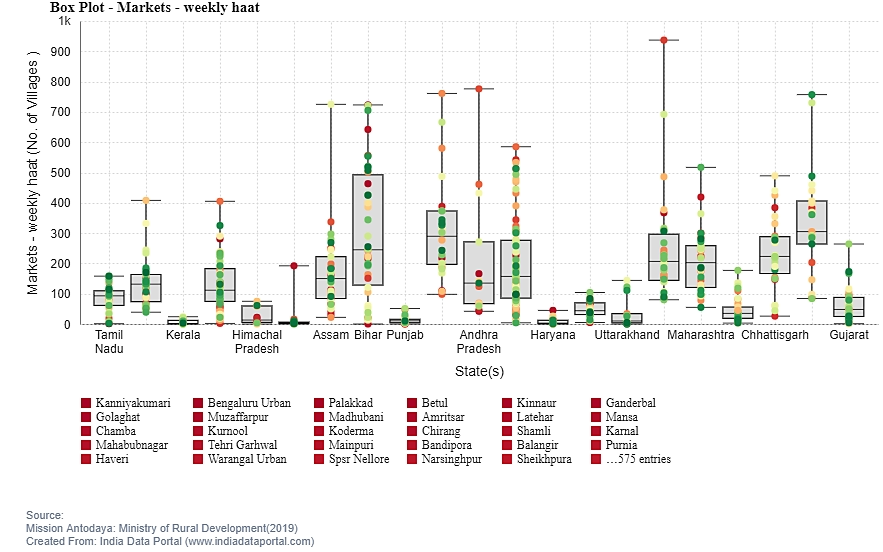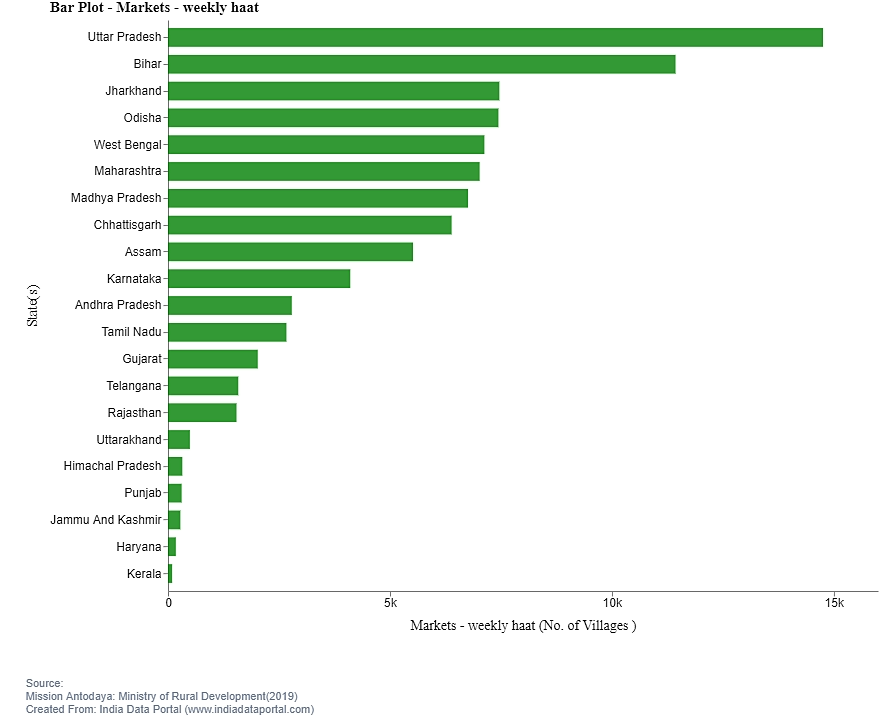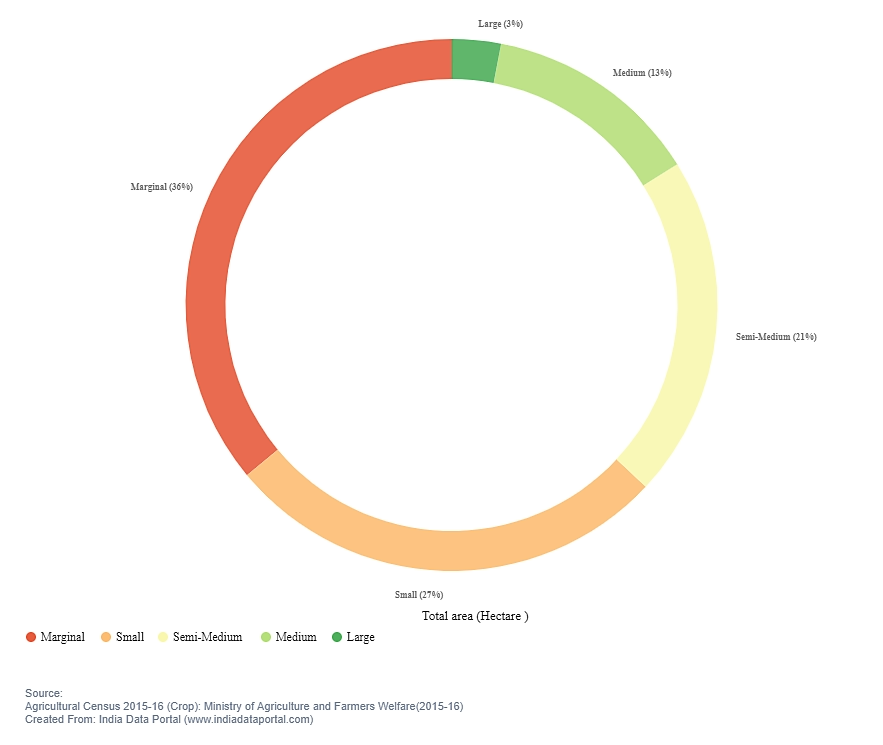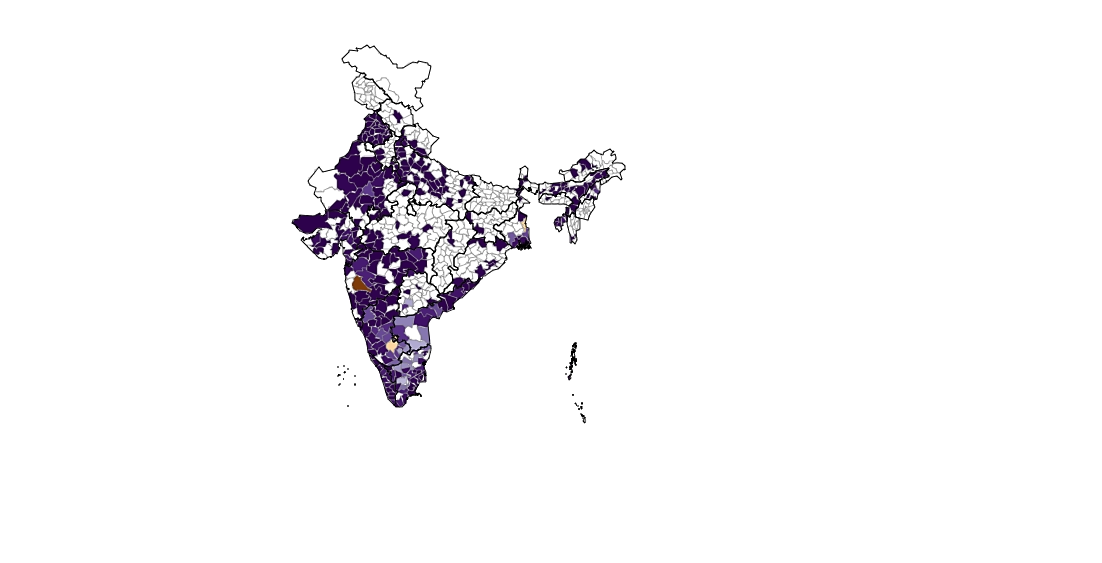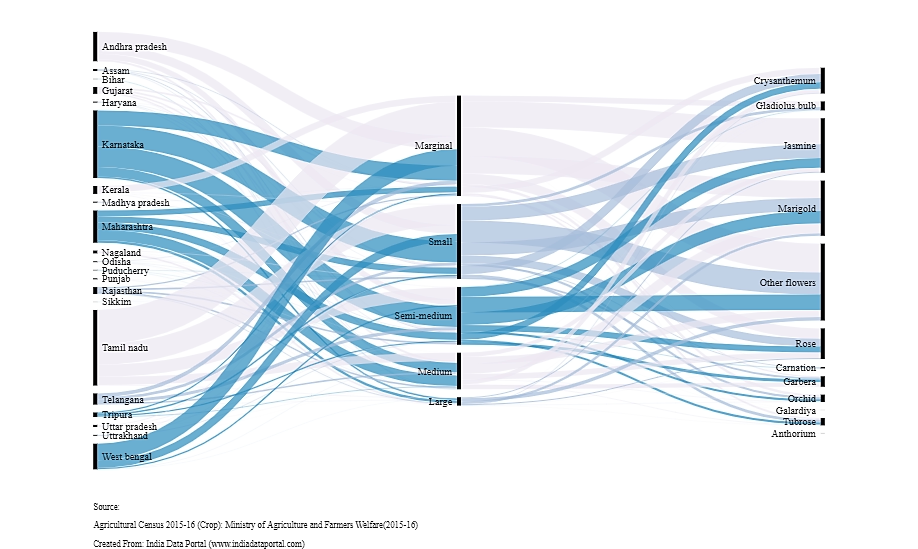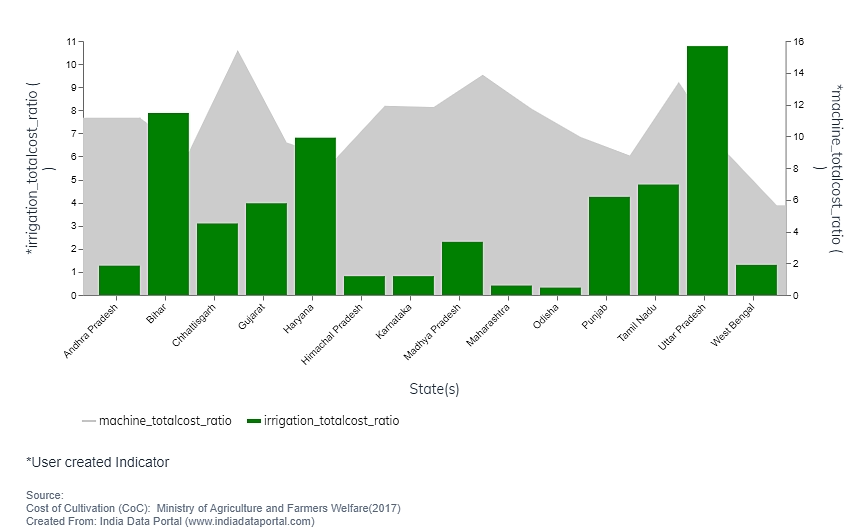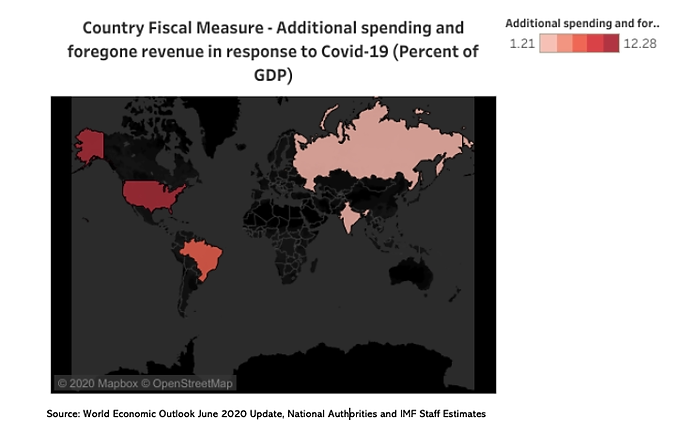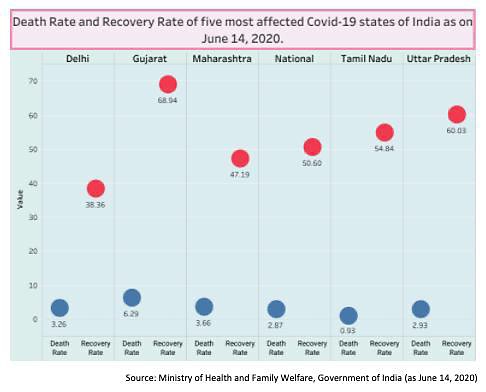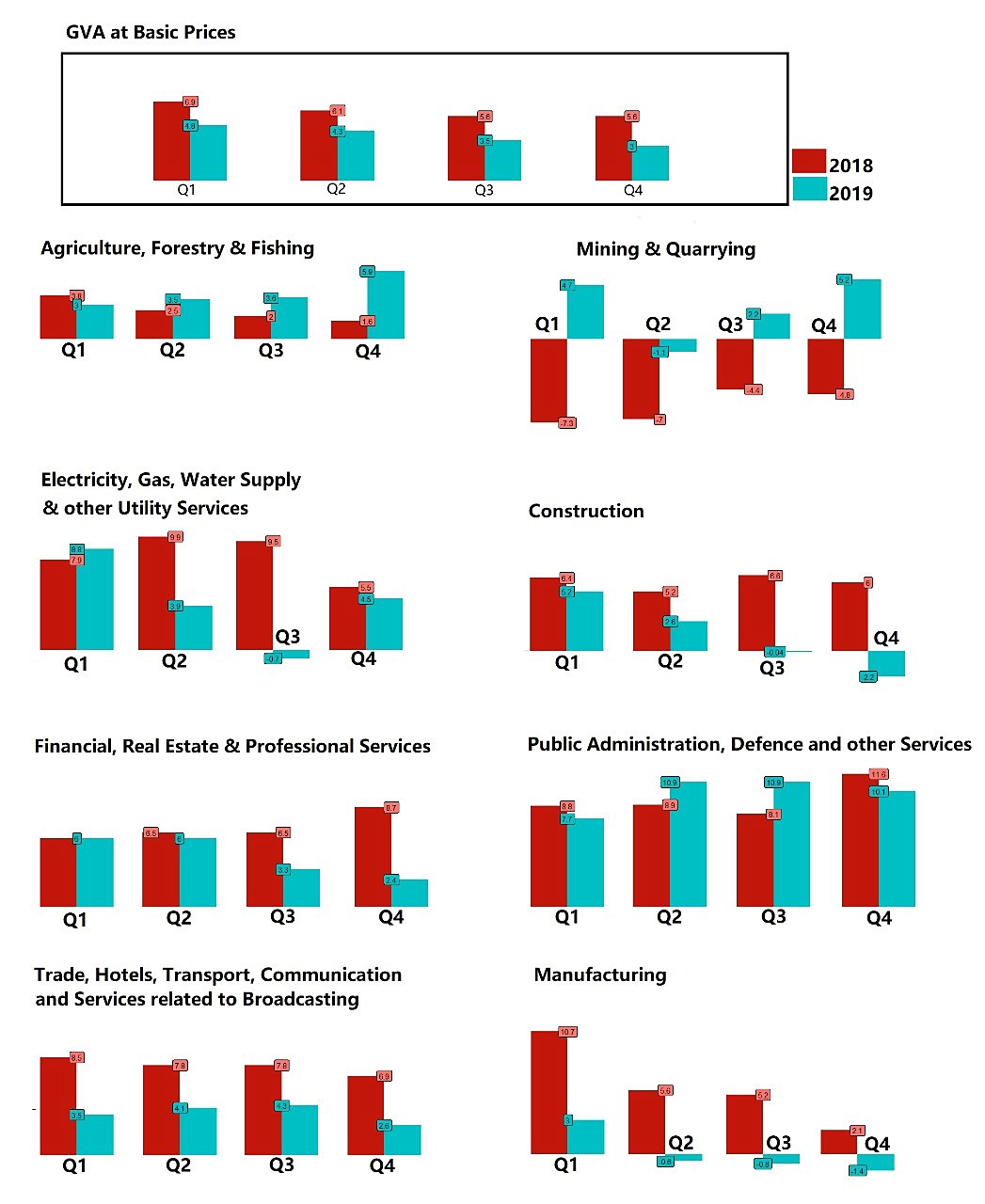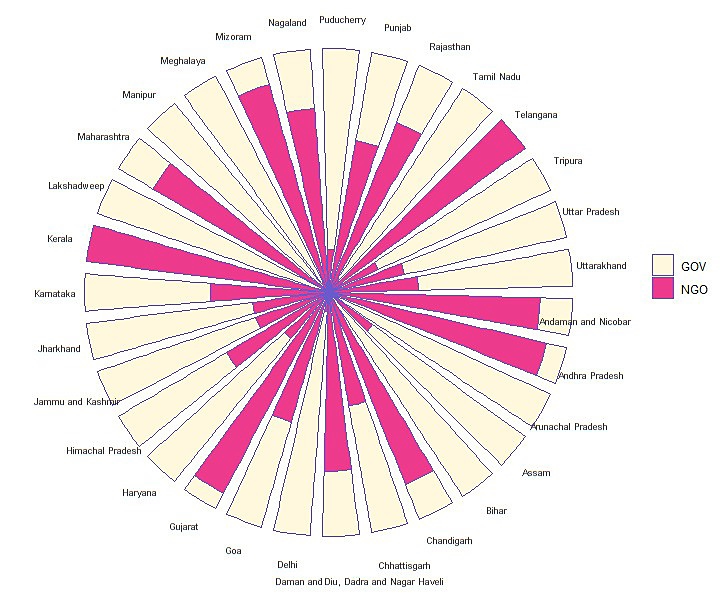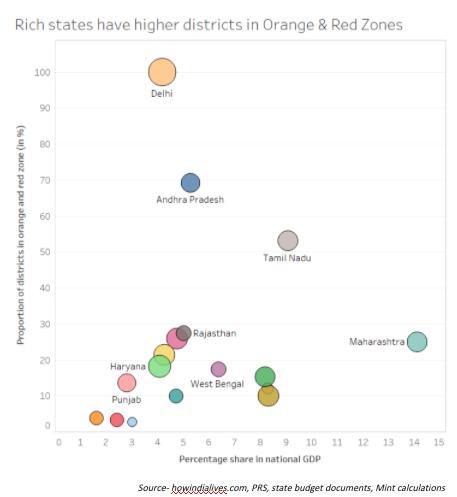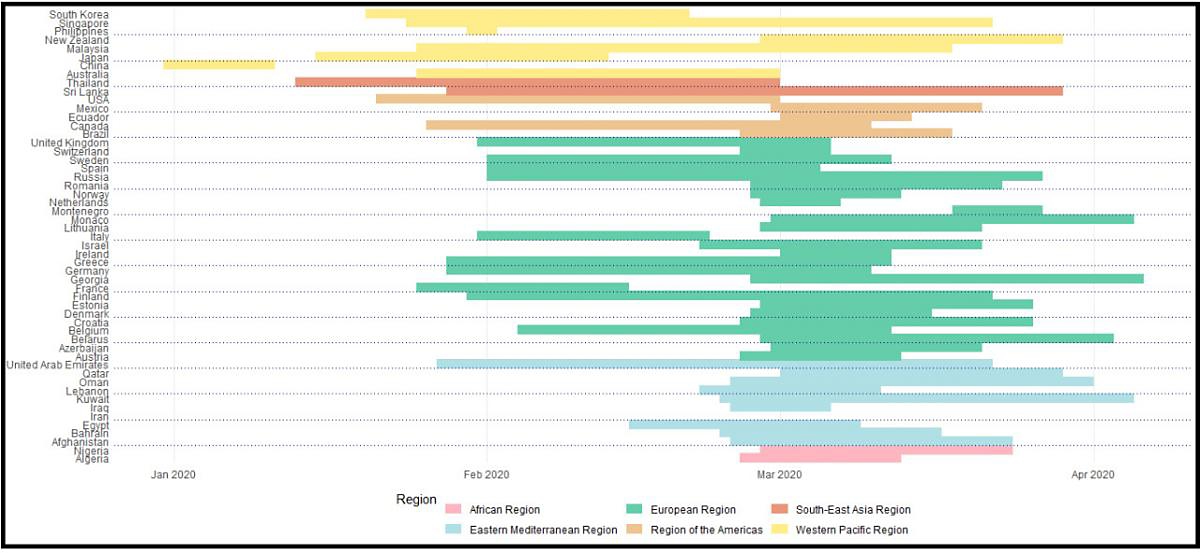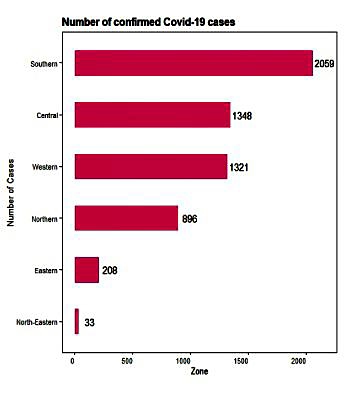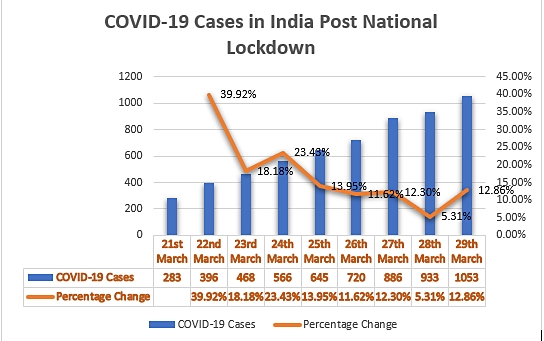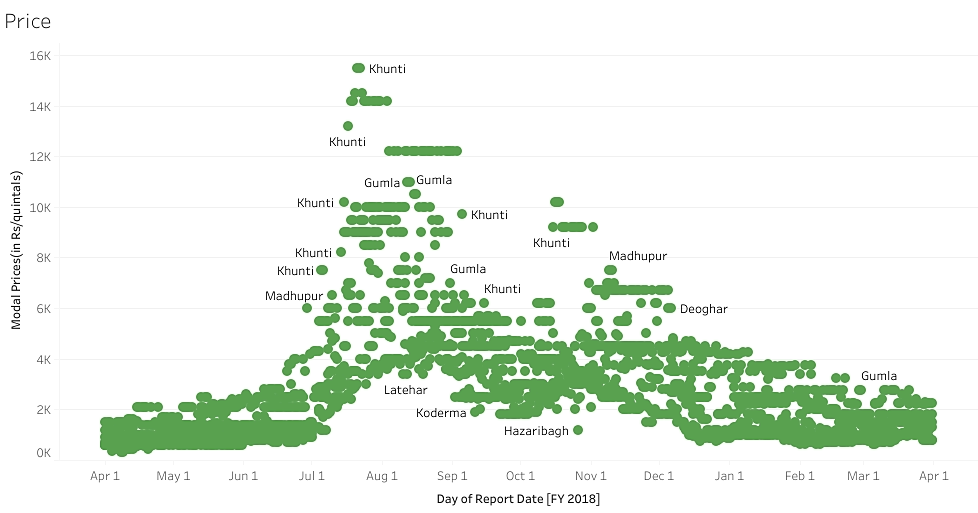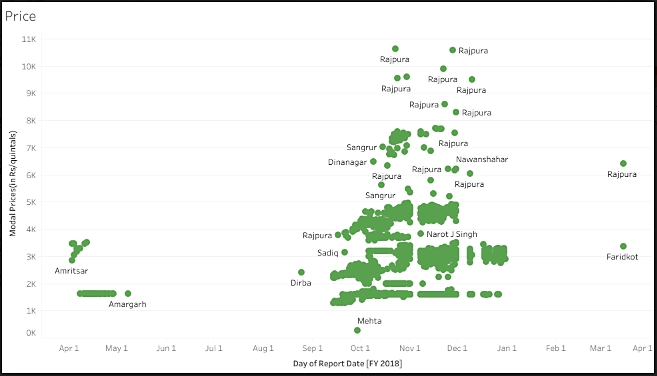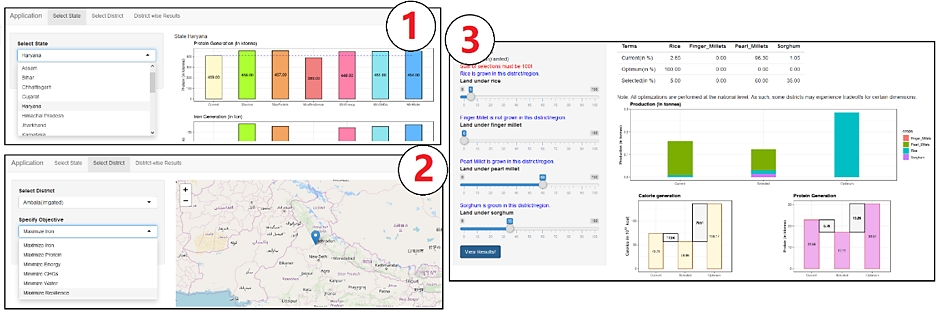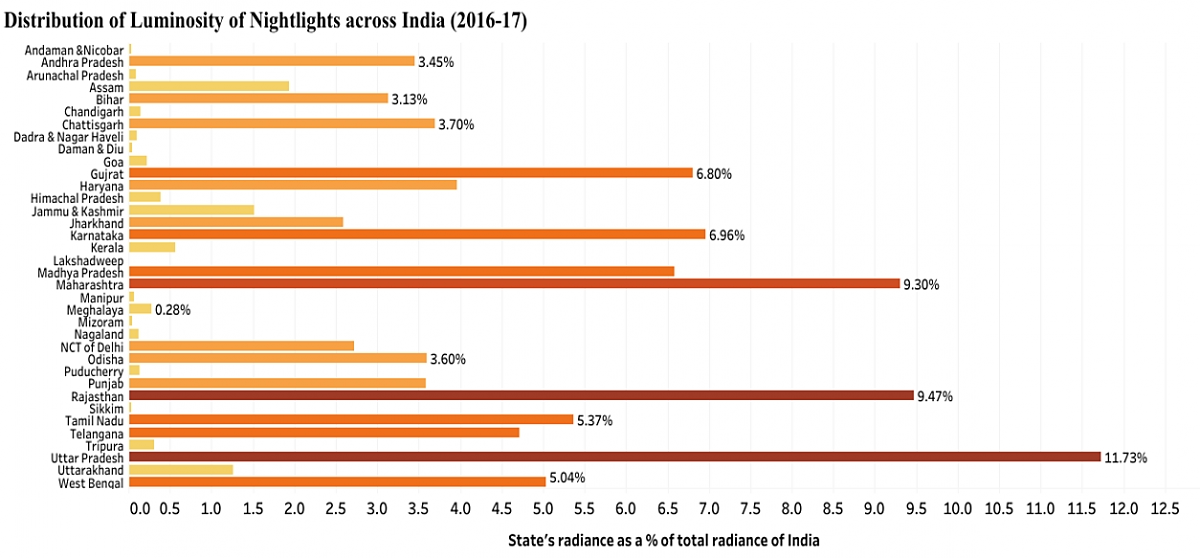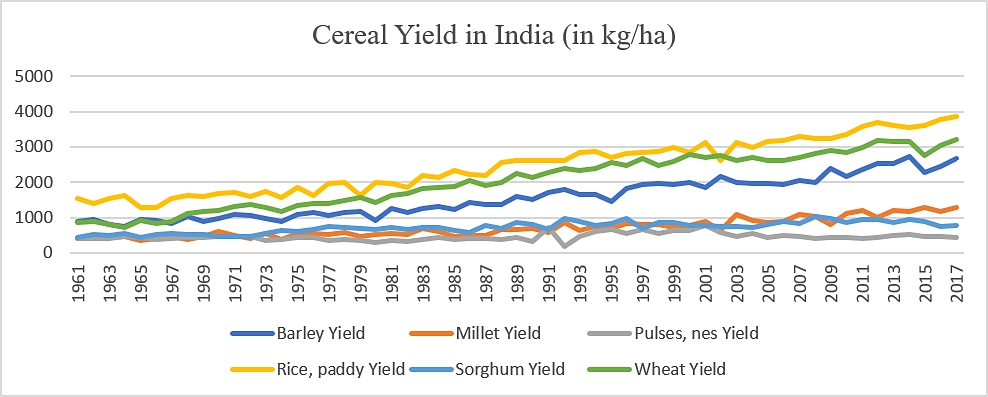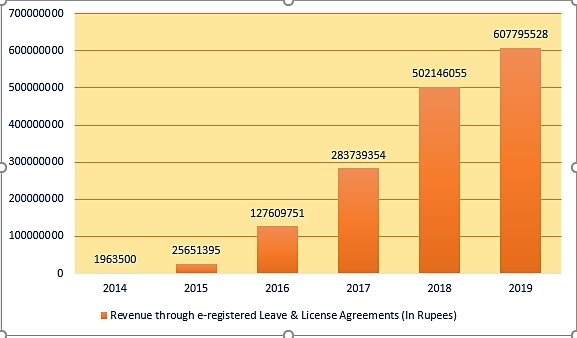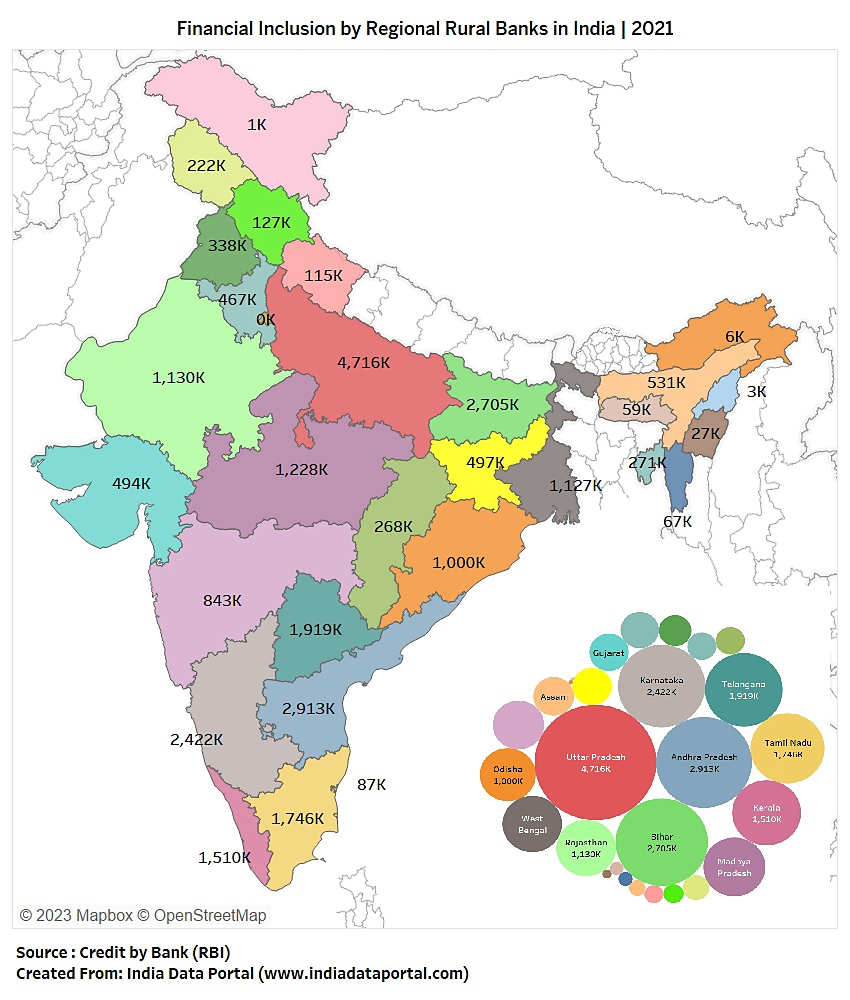
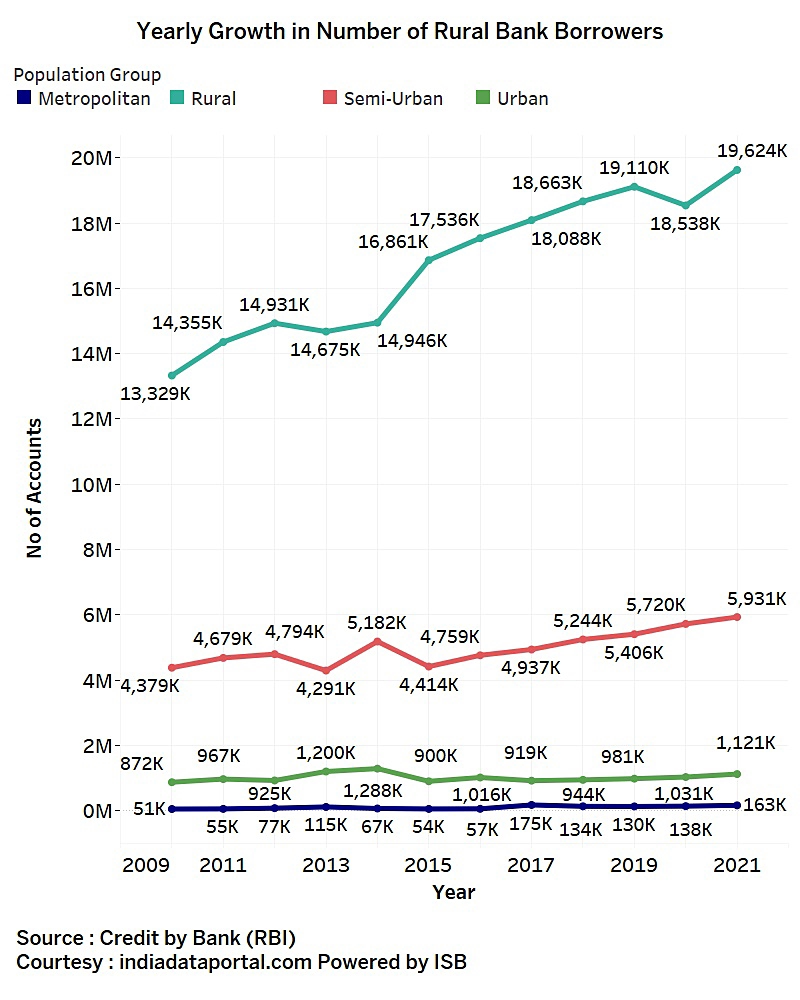
#FinancialInclusion #DataInsights
Regional Rural Banks (RRBs) Making FINclusive Bharat
As of 2022, there are 43 Regional Rural Banks (RRBs) in India. Among these, 34 RRBs are profit-making and reported a net profit amounting to Rs 3219 crores in 2021-22, a rise from Rs 1682 crores in 2020-21.
In India, RRBs represent 9 per cent of the borrowers' accounts, whereas only 3 per cent of credit flow happens through loans from the banking ecosystem. The number of borrowers through RRBs was 1.86 crores in 2010 which increased to 2.68 crores in 2021 with a compounded annual growth rate (CAGR) of 4.53 per cent. The primary account holders of the RRBs belong to the rural (73 per cent) and semi-urban (22 per cent) areas. The lion's share of credit flow in RRBs happens to the agricultural sector at around 68 per cent, amounting to Rs 229,648 crores in 2021. The rural area-dominated borrowers have grown from 1.3 crores to 1.9 crores between 2010 and 2021; meanwhile, semi-urban areas have seen a surge from 43.7 lakhs to 59.3 lakhs accountholders during the same period.
#IDPInsight
How COVID-19 Impacted Petroleum Consumption
The advent of COVID-19 in India led to several repercussions at multiple levels. From industrial slowdown to restricted public movement, every major economic activity got affected. The lack of public movement also affected vehicle mobility.
According to the Petroleum Planning and Analysis Cell (PPAC), the consumption of petrol (Motor Spirit) came down drastically to 973 TMT (Thousand Metric Tons) in April 2020 which was around 2500 TMT in February 2020 when the nationwide lockdown was imposed (Figure 1).
After the 90 days lockdown period (April 2020 to June 2020), when the lockdown was lifted Government of India started the unlock phase, the consumption rate bounced back to 2,280 TMT (Figure 2) with an increased rate of around 134 percent in June 2020.
On comparing the Petroleum Consumption with the Google Mobility trend of Public Stations (percent change of mobility trends for places like public transport hubs such as subways, bus, and train stations), the mobility decreased to -62.3 percent in April 2020 but again bounced back to -31.3 percent in June 2020 (Figure3).
By - Danish Ali Hakim, Research Associate
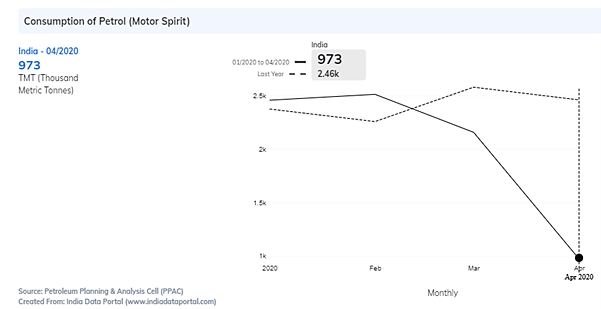
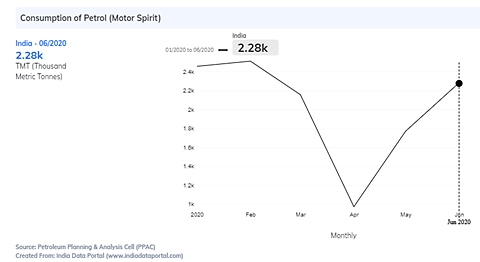
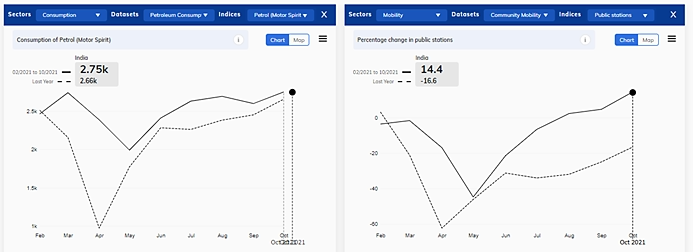
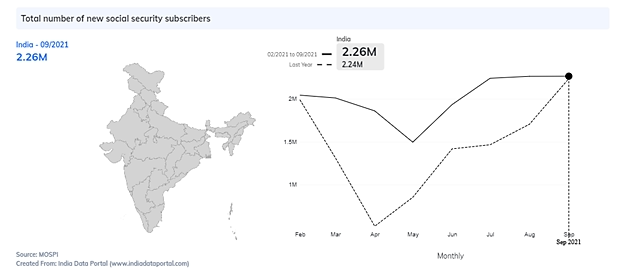
#IDPInsight
Growth and Employment
Growth and employment form a basic economic cycle. Higher growth means greater output and more income, which in turn leads to higher investment and employment generation in the economy. The rise in employment further helpsin increased output, ultimately resulting in more growth. Thus, completing the economic cycle.
According to MOSPI sources, the Indian economy witnessed a fall in growth (GVA at 2011-12 prices) during Q1 ( -22.4%) and Q2 (-7.3%) of 2020-21, respectively. This was primarily due to the lockdown and economic restrictions caused by the COVID-19 pandemic.
The impact of this fall in economic growth was also noticed in the employment sector. There was a contraction of the formal economy with a significant reduction in employment generation, clearly represented by indiadataportal.com (Figure). https://tinyurl.com/y6ejr6xz
According to MOSPI sources, the total number of new subscribers to social security schemes such as EPF, ESI, and NPS came down during Q1 and Q2 of 2020-21. This indicates the generation of employment in the formal sector.
A slower rate of economic growth (recovery) was also observed in Q4 (January-March) of 2020-21owing to the second wave of the pandemic, which was reflected in the downfall of new subscriptions during this period.
The financial year 2020-21 started with an economic slowdown. The first two quarters, Q1 and Q2, witnessed a growth of 18.8 per cent and 8.5 per cent, respectively. The higher growth could be the lower base effect however, the recovery led to a rise in the new social security subscriptions as presented by indiadataportal.com.
By Sridhar Kundu
#IDPInsight
MGNREGA : Is it less urgent?
#MGNREGA #ruraldevelopment #employment #economy #publicpolicy
MGNREGA is designed to provide livelihood security to rural households by providing 100 days of guaranteed employment whose members volunteer to do unskilled manual work. It has become the largest public sector job creator in rural India since it came into effect in 2006.
As per the latest information, 72 million rural households have been provided work under this development program in 2020-21. However, every household does not get the prescribed 100 days of employment in a single financial year.
The historical trend shows that less than 10 per cent of households receive 100 days of employment. In 2013-14, this share was 9.7 per cent and in 2018-19, there was a minor increase in this share by 0.3 per cent. In 2020-21, only 9.4 per cent of households who worked under the program crossed the 100-day limit.
There is a wide variation at the state level on the per cent of households working for 100 days in a single financial year. Information from IndiaDataPortal shows that in 2018-19, households completing 100 days of employment is less than 2 per cent in major states such as Punjab, Haryana, Bihar, and Uttar Pradesh. However, in states like Kerala and West Bengal, this share is about 30 per cent.
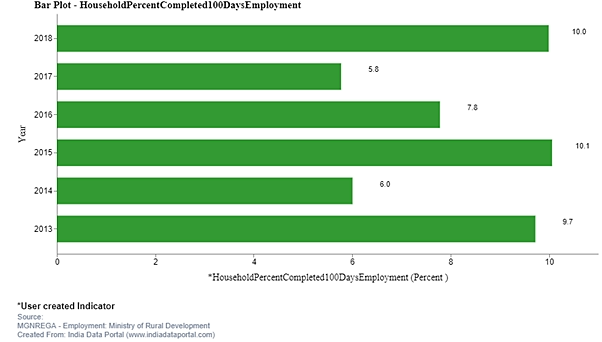
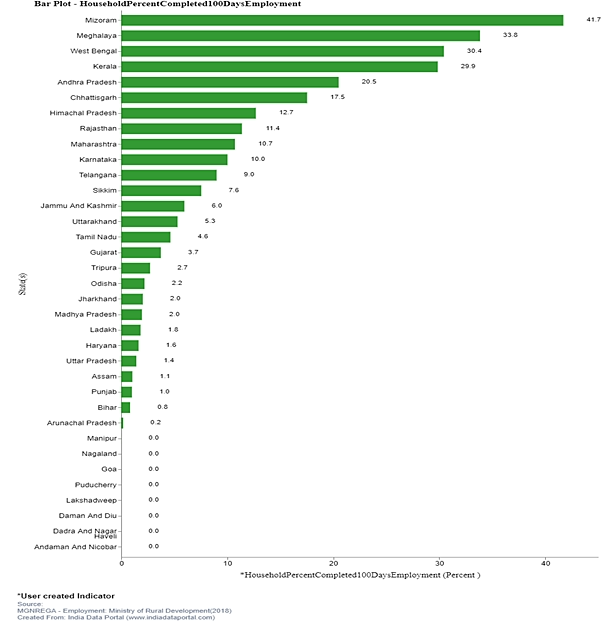
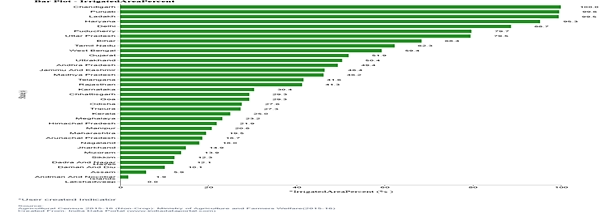
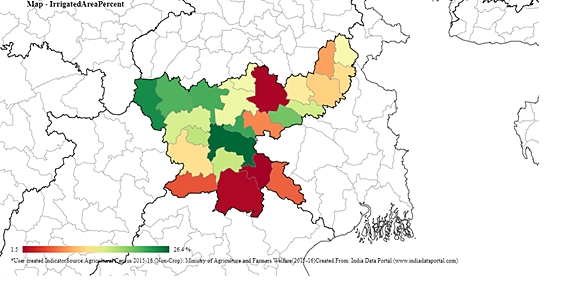
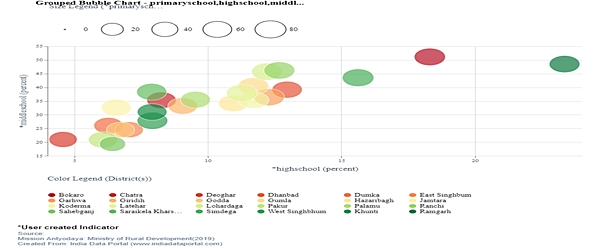
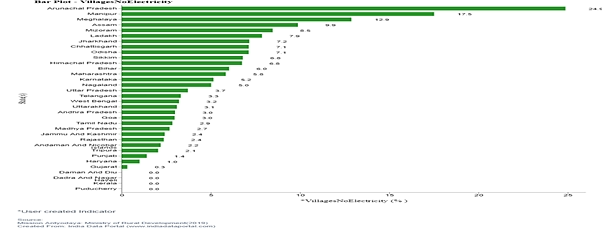
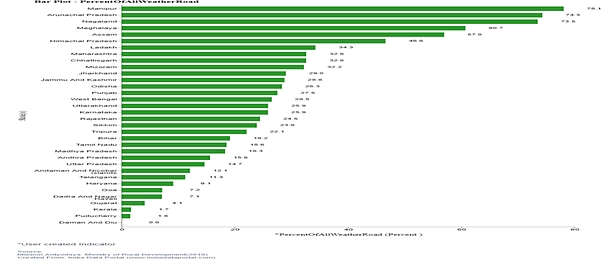
#IDPInsight
Jharkhand Economy: Need of a strategic intervention
Jharkhand was created as a new state on 15th November 2000. The objective behind the state formation was to promote development in the region by providing additional administrative powers. Two other states were formed during this year with the development as the key objective unlike language, were Uttarakhand (16th November) and Chhattisgarh (1st November).
The state Jharkhand was created by the separation of tribal districts from the southern part of Bihar. Although more than two decades have passed since its formation, the state has not made significant economic progress. It is one of the poorest states of the country at present.
As per the latest information from Central Statistical Organisation (CSO), per-capita income (at 2011-12 constant year prices) of Jharkhand in 2020-21 was Rs.59,369, just above Uttar Pradesh (47,271) and Bihar (34,313). The national average per-capita income for this year was Rs.86,658. The per-capita income of Jharkhand is also lower than its two contemporary states i.e., Uttarakhand (1,78,050 in 2019-20) and Chhattisgarh (Rs. 82,418).
An economy needs steady growth and a fair redistribution of the growth among its people to attend a higher per-capita income in the long run. In comparison to the states such as Uttarakhand and Chhattisgarh, the state economy of Jharkhand has witnessed a discontinuous growth process. In the past few years, during 2011-12 and 2019-20, both Jharkhand and Chhattisgarh witnessed an equal growth rate of 6 per cent per annum. However, fluctuation of economic growth in Jharkhand, as measured by the standard deviation (S. D=6) is higher than the same in Chhattisgarh (S. D=3).
The lower per-capita income of the state shows a lower level of standard of living of the people. Estimates from NSS Household Consumption Expenditure Survey 2011-12 (this is the last survey conducted by NSSO on household-level consumption expenditure), show that about 37.4 per cent of the population in the state lives below the poverty line, with over 40 per cent in the rural areas and nearly 24.8 per cent in the urban areas.
Jharkhand is one of the richest states in terms of the availability of raw materials. Coal and Iron ore are two major inputs in an industrial economy. Twenty-seven per cent of India’s coal reserves and 26 per cent of iron ore reserves are located only in this state. Besides having large resources, natives from the state migrate to other states in search of employment. According to Census 2011, total migration from the state in search of employment was 8.25 lakhs which is higher than the major states such as Bihar, Himachal Pradesh, and Uttarakhand.
To address the above economic issues such as lower level of per-capita income, discontinuous growth process, higher level of poverty and outflow of migration, a few areas need specific attention.
a. Although mining is one of the major economic activities of the state, above 70 per cent of the population in the state depends on agriculture for their livelihood. Agriculture and allied sectors share about 12 per cent of the state’s Gross State Domestic Product (GSDP). This shows a lower level of productivity which could be caused due to lower level of irrigation in the state. Information from India Data Portal shows that about 15 per cent of the total Gross Cropped Area is under irrigation (Figure1). Even some parts of the states such as districts like West Singhbhum, Giridih, Saraikhela have irrigated areas of less than 2 per cent. (Figure2)
b. Improvement in productivity in any production process needs skilled manpower which warrants a good education and healthcare system. Some of the interior villages in the state still need the penetration of primary education. About 67 per cent of villages have primary schools, 31.5 per cent have secondary schools and 9 per cent of villages have access to high schools. IDP presents district-wise information on village level concentration of primary, middle, and high schools (Figure 3).
The state is yet to develop its healthcare system. Most of the villages in the interior districts in the state are yet avail basic healthcare facilities. According to Mission Antyodaya Report 2019, nearly about 87 per cent of villages do not a health centre.
c. Absence of basic infrastructure facilities in the state create hurdles in the development process. Electricity is one of the major inputs in the production process. Micro, Small and Medium Enterprises (MSMEs) need a continuous electricity supply. According to Mission Antyodaya Report 2019, only 2 per cent of villages are having electricity supply access to MSMEs. On the domestic front, about 83 per cent of villages are having electricity connectivity for domestic use. (Figure4).
The second important element in the fray of physical infrastructure comes as road. Road creates the path towards economic progress. Production from agriculture, industry needs a better road to get market access. Till today, about 29 per cent of villages in the state do not have all-weather roads. (Figure-5)
There is a need for a continuous effort to address the inner priorities of the state to create a platform for long-run economic development. Irrigation, road infrastructure, education, health, and electricity supply are a few important units to build an economy’s inner strength. A strategic intervention in each of these areas with limited resources in hand would make the difference.
By Sridhar Kundu
#IDPInsight
Do the union and state governments procure all #crops under the possession of farmers after the #harvest is over? The answer is, No. The #farmers are left with certain quantities of crops even after the procurement. They approach unregulated markets to sell these extra quantities. But at what price do they sell it? This sale price is known as the market price which is determined by demand and supply. The market price can either be above or below the Minimum Support Price (MSP).
MSP is the protection price which is estimated by the Commission of Agriculture Cost and Prices (CACP) taking into consideration all costs involved in the production of a crop. Any sale which happens at a price less than the MSP may cause monetary loss to the farmers.
Bhavantar Bharpayee Yojana is a compensatory scheme that was launched by the state government of #MadhyaPradesh in 2017. Bhavantar means the difference in value and Bharpayee means compensation. Under this scheme, the government does not procure crops, but it compensates the farmers in case there is a difference between the MSP and the market price.
Recently, the state government of #Haryana also implemented this scheme for compensating the farmers who grow #millets. The MSP of #bajra (pearl millets) for the Kharif Marketing Season (KMS) was declared at Rs 2250 per quintal in 2021. There has been a steady rise in the MSP for bajra since 1998 https://tinyurl.com/yjxb7exn
Sources in the Haryana state government say that the current market price of bajra has come down to Rs 1650 per quintal. This made the state government fix the compensatory price of Rs 600 per quintal under the Bhavantar scheme. It needs to be noted here that the government of Haryana allocated Rs 10 crore in the 2021-22 state budget.
Explore more datasets and make interesting #visualisations on www.indiadataportal.com (- by Sridhar Kundu)
#kharif #millets #bajra #bhavantar #haryana #MSP #CACP #BhavantarBharpayeeYojana #MinimumSupportPrice #pearlmillets
Bharti Institute of Public Policy Indian School of Business Ministry of Agriculture & Farmer’s Welfare, Government of India Chief Minister's Office, Haryana Chief Minister of Madhya Pradesh Press Information Bureau - PIB, Government of India DD Kisan Haryana Kisan & Agricultural Costs and Prices Commission/Haryana Kisan Ayog
